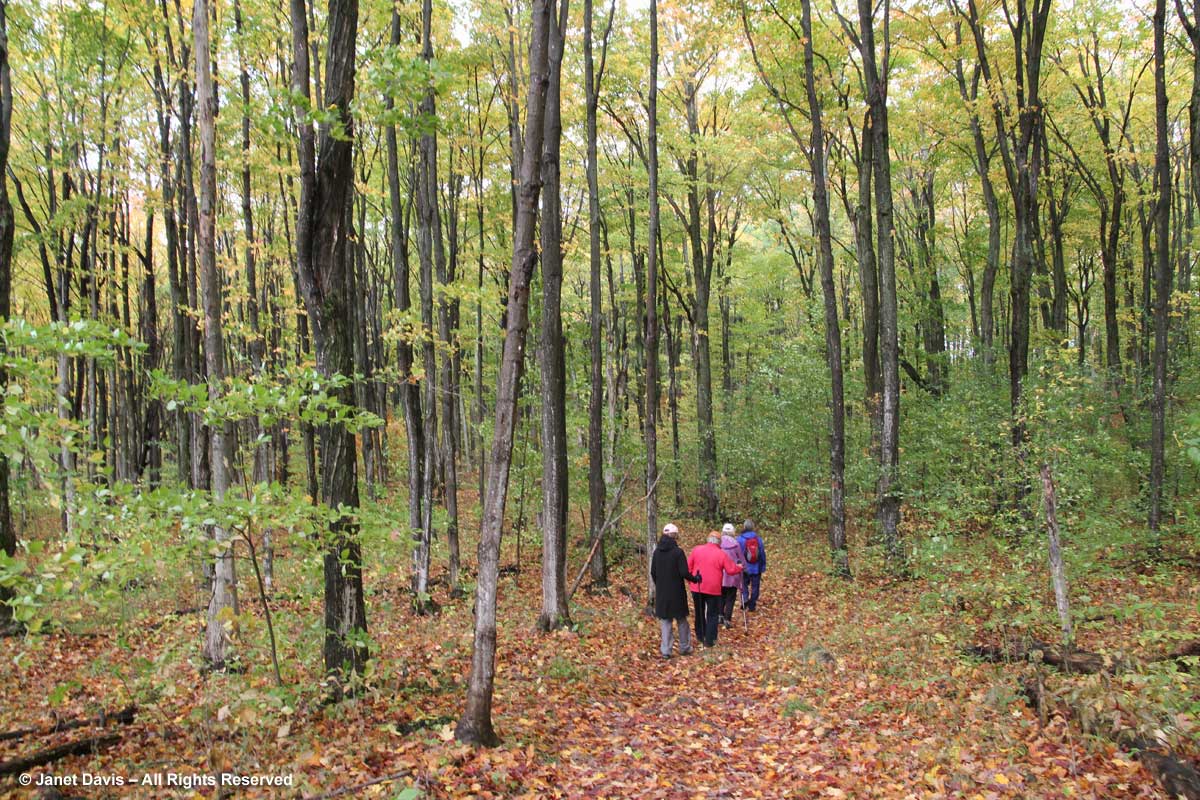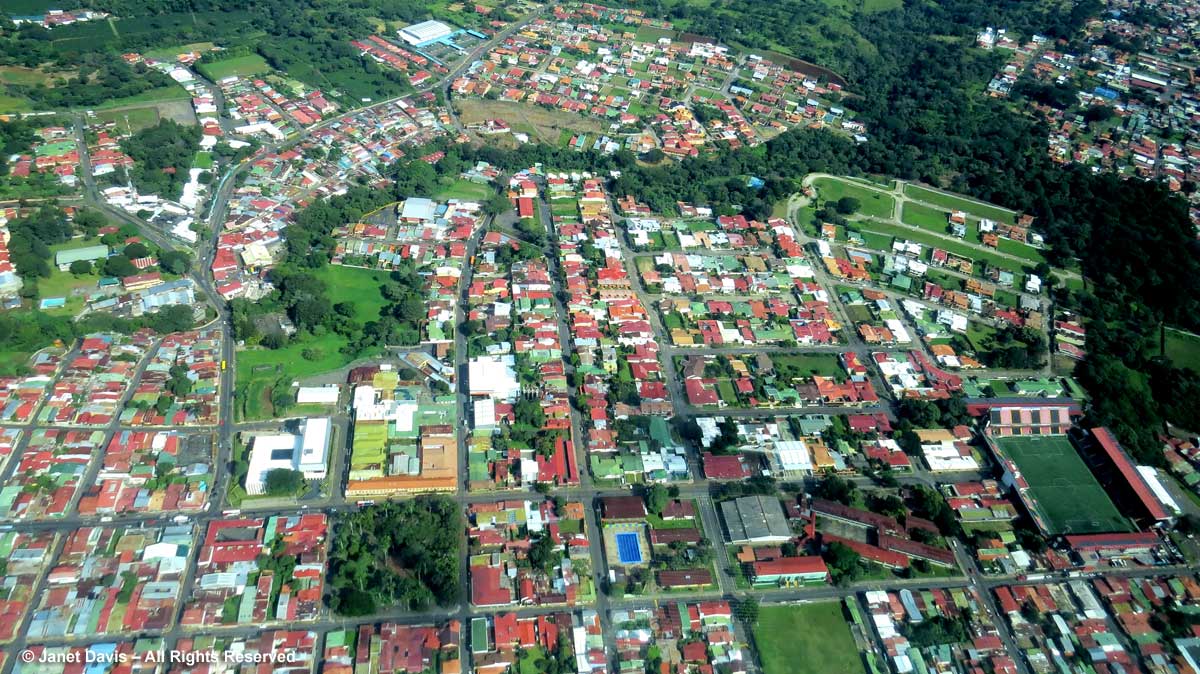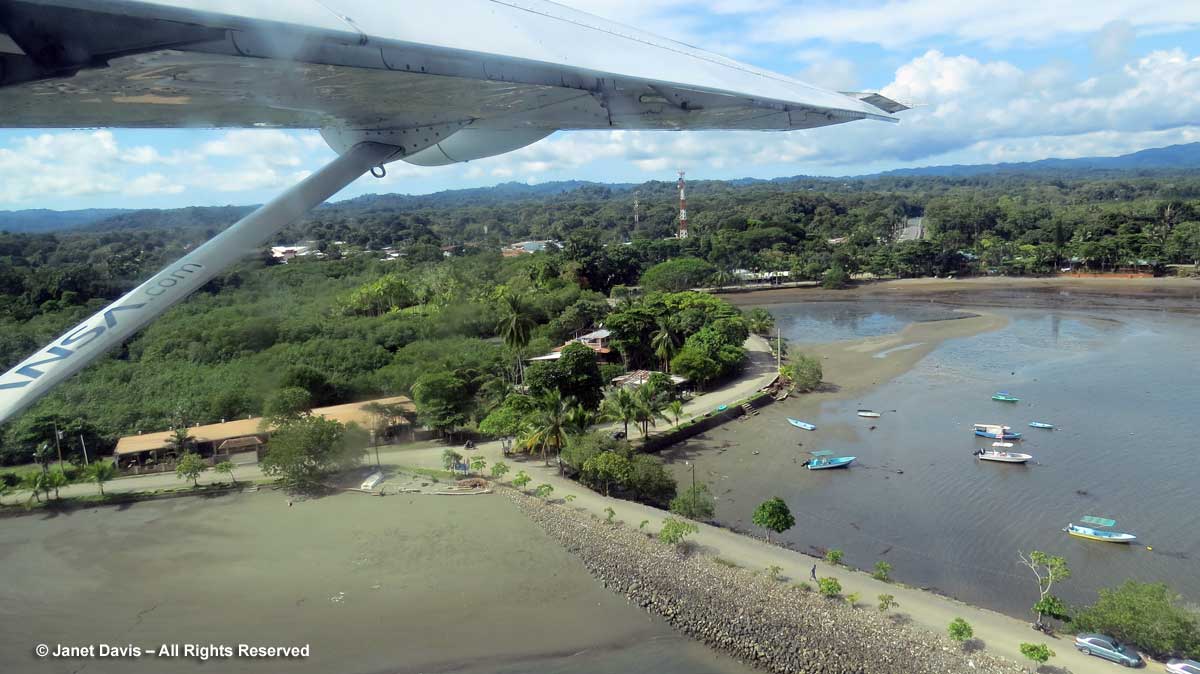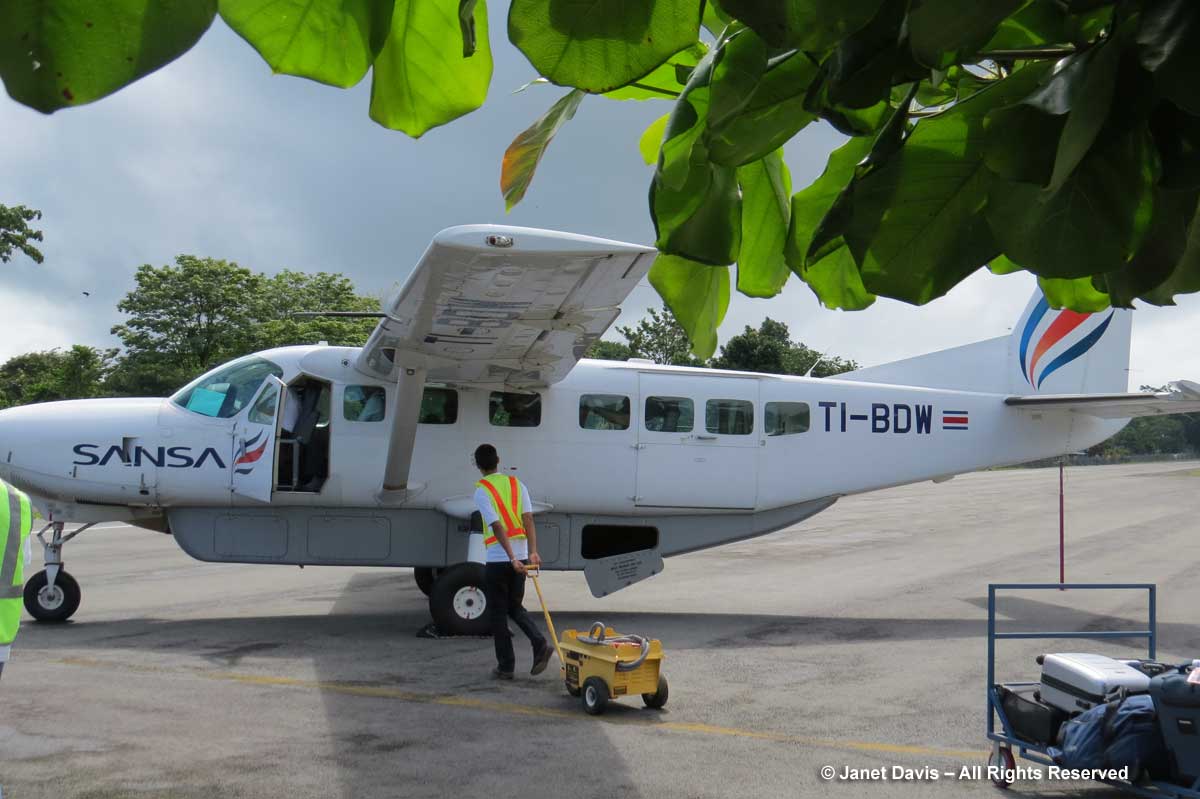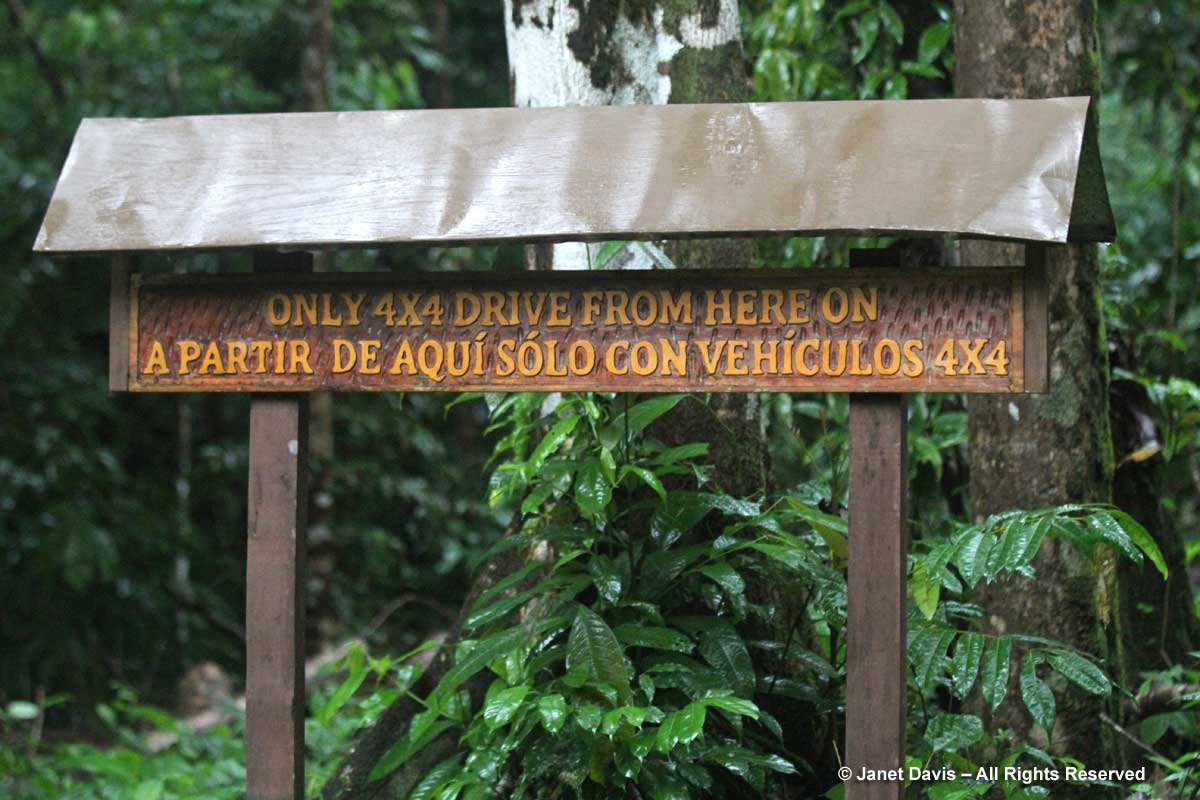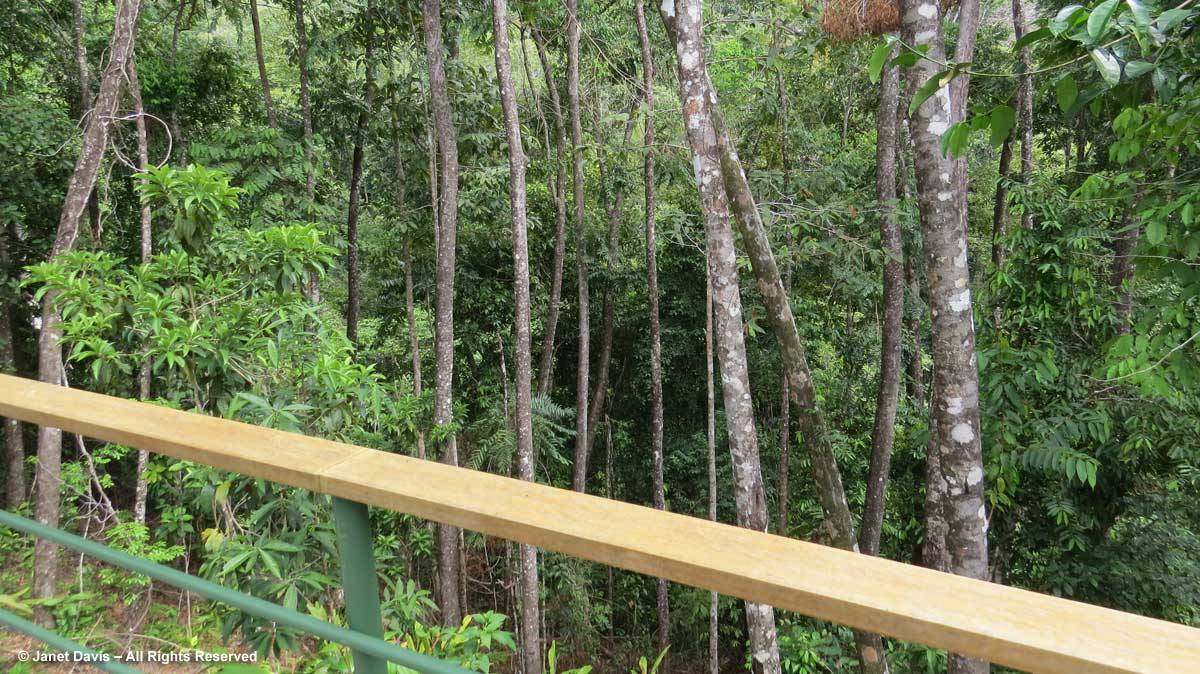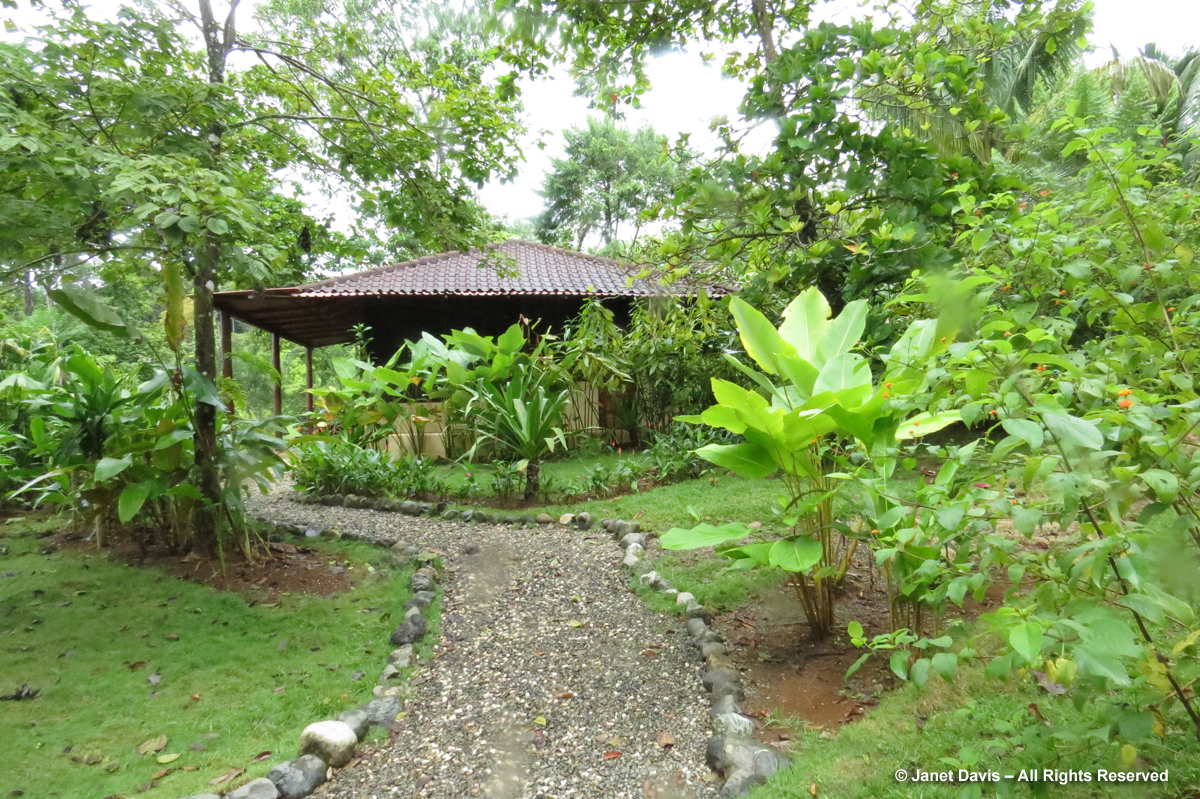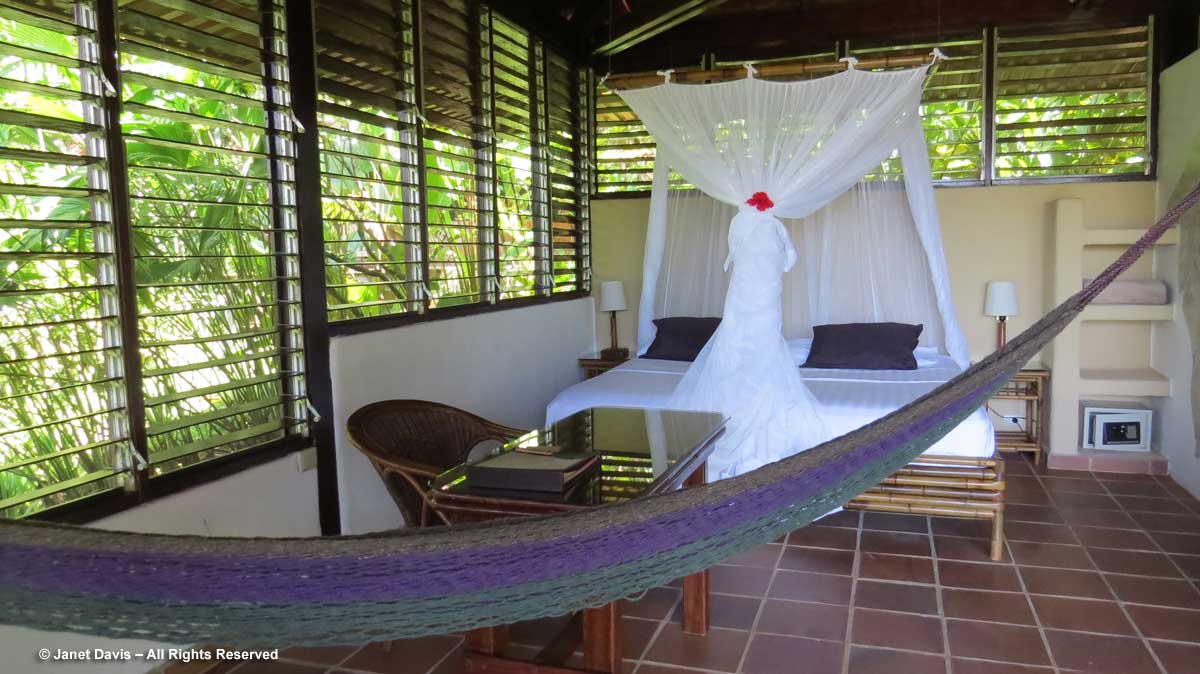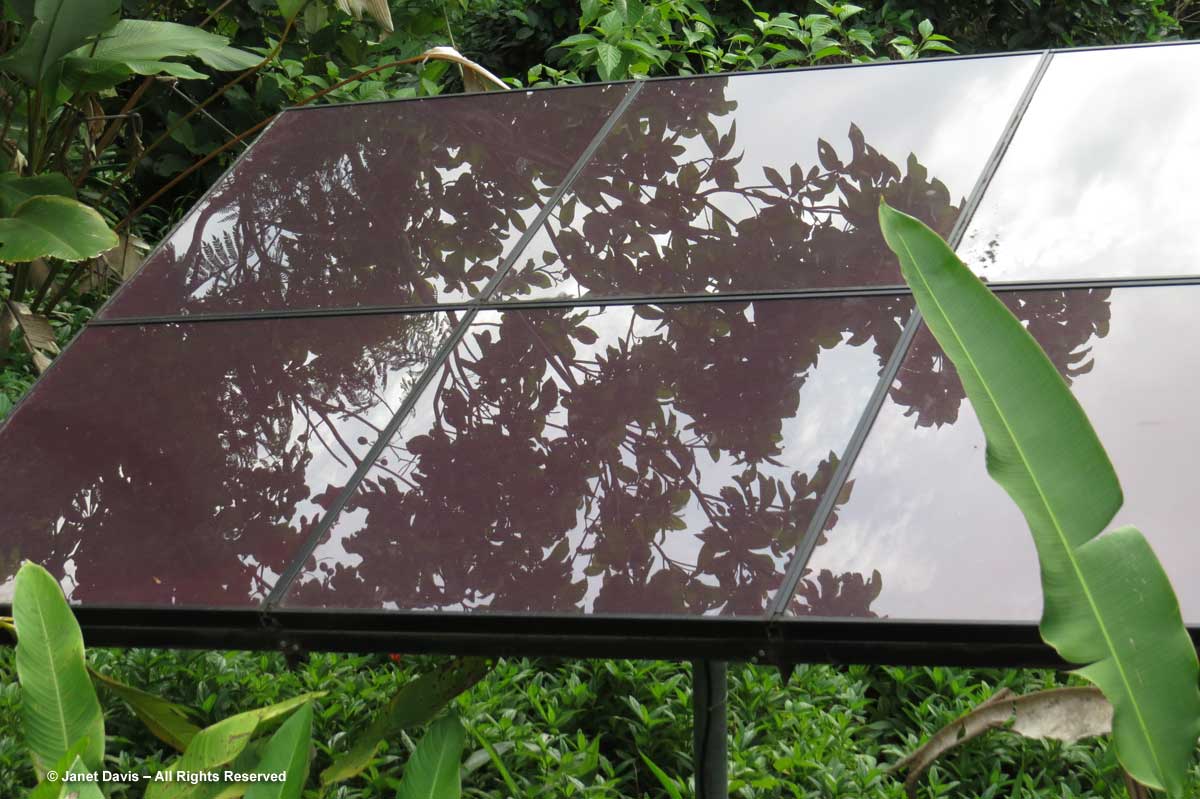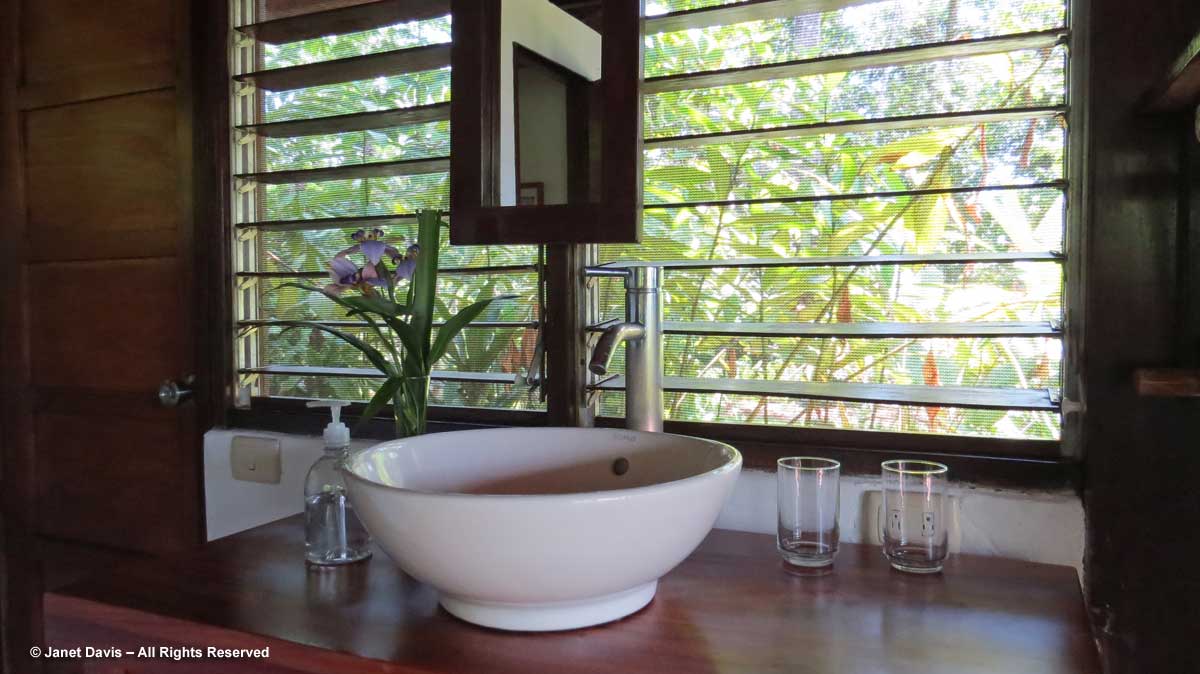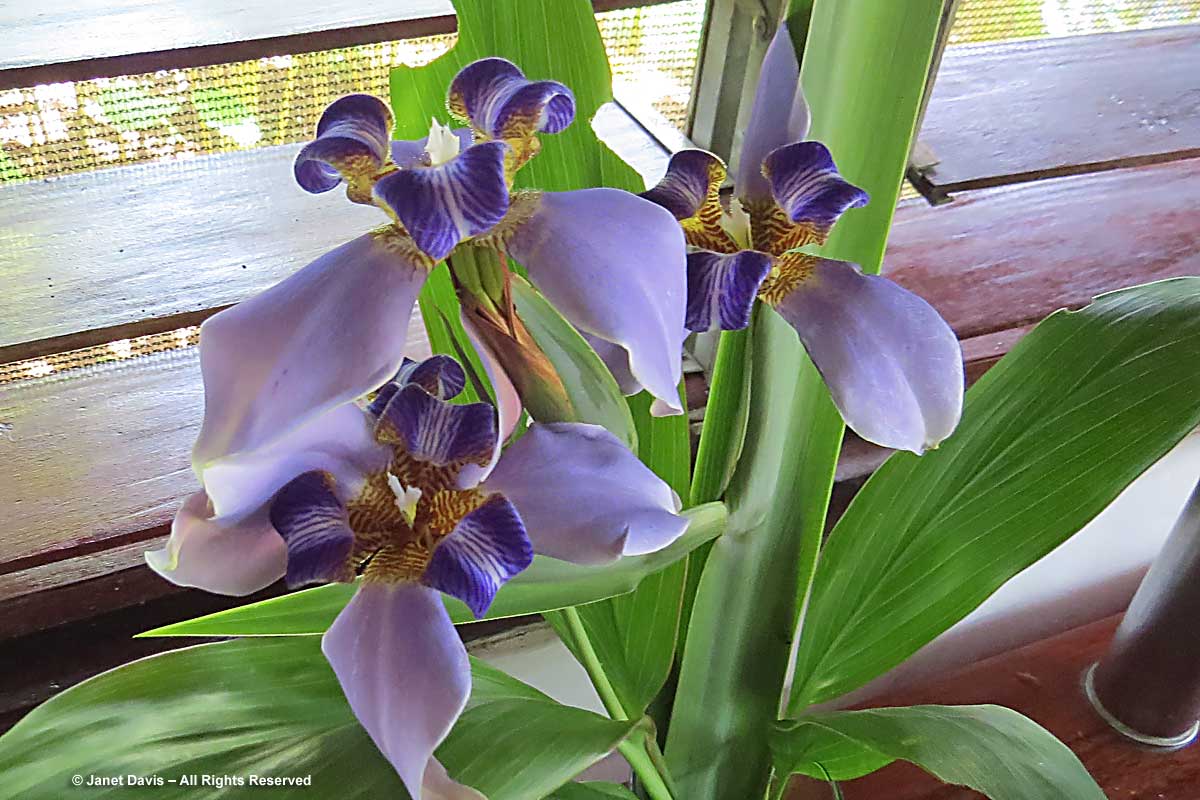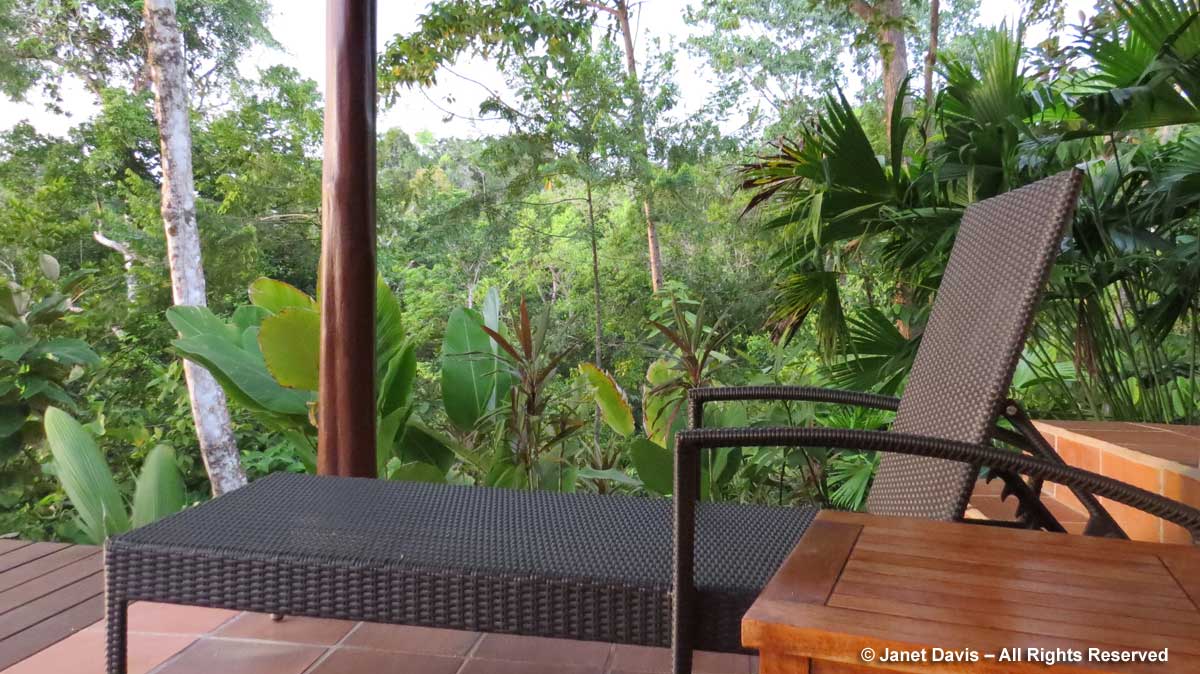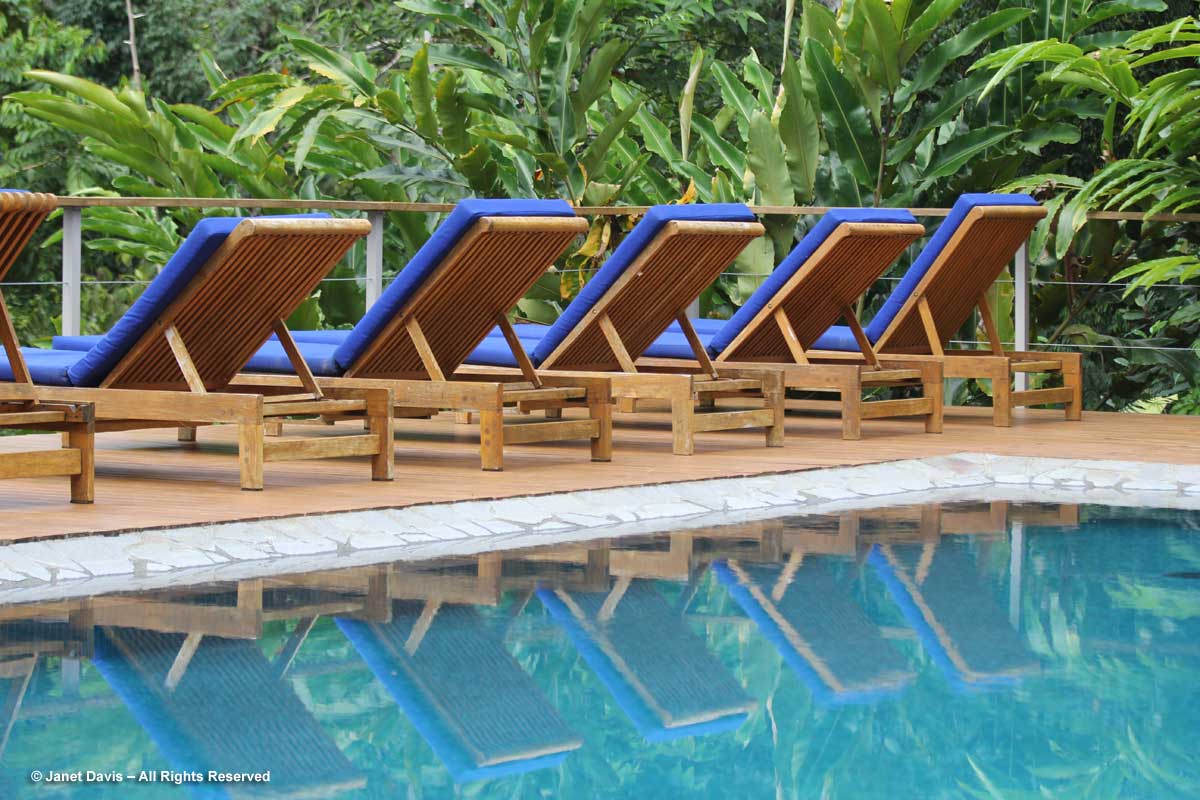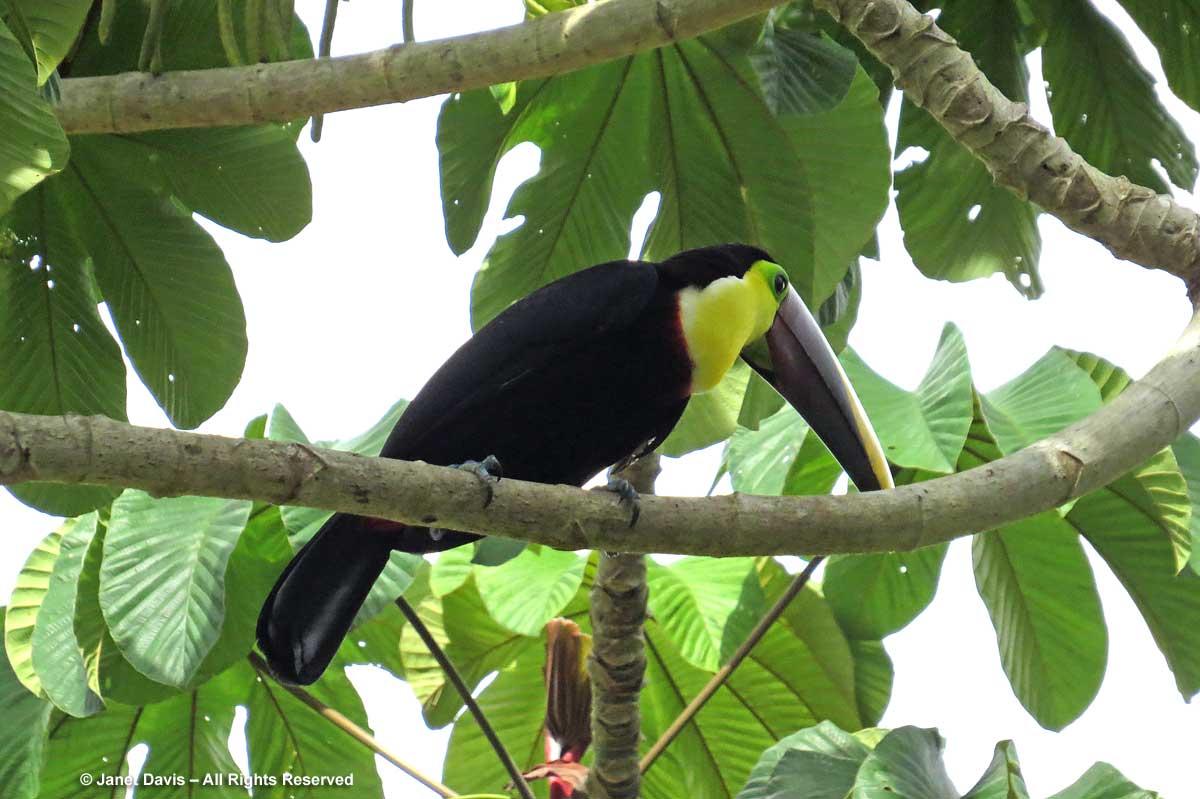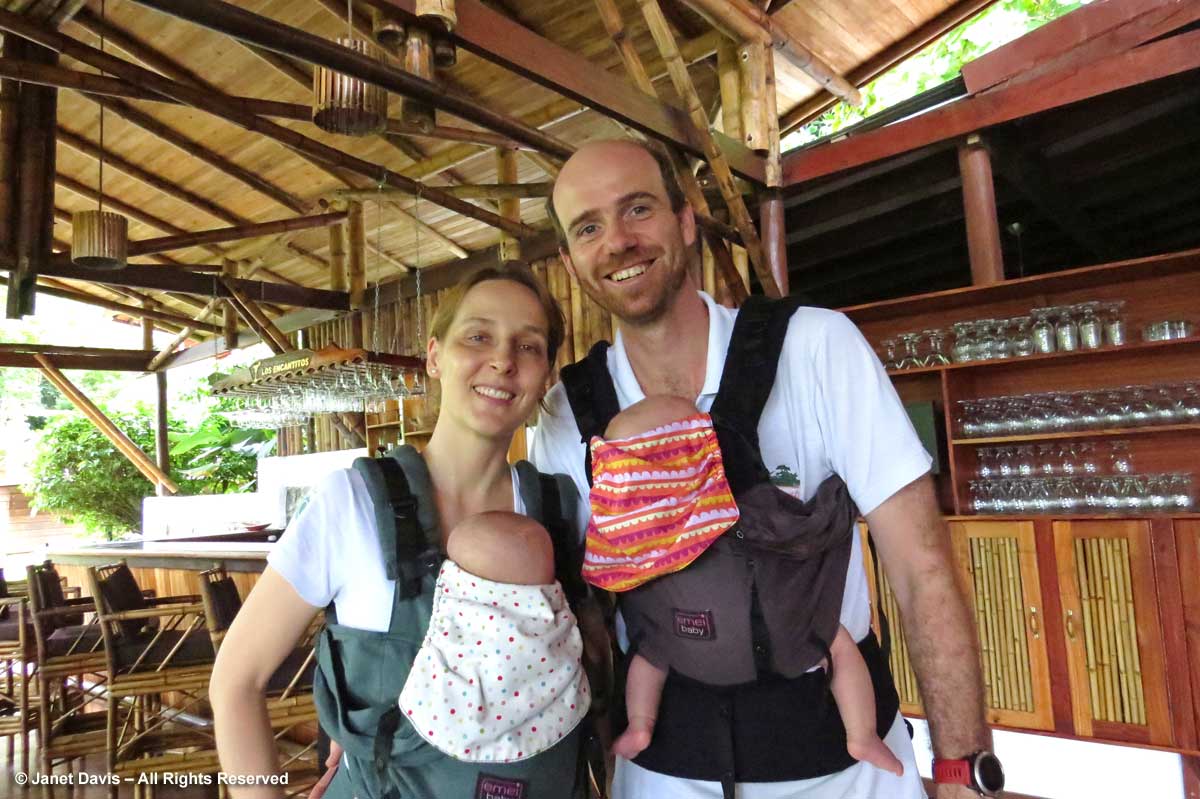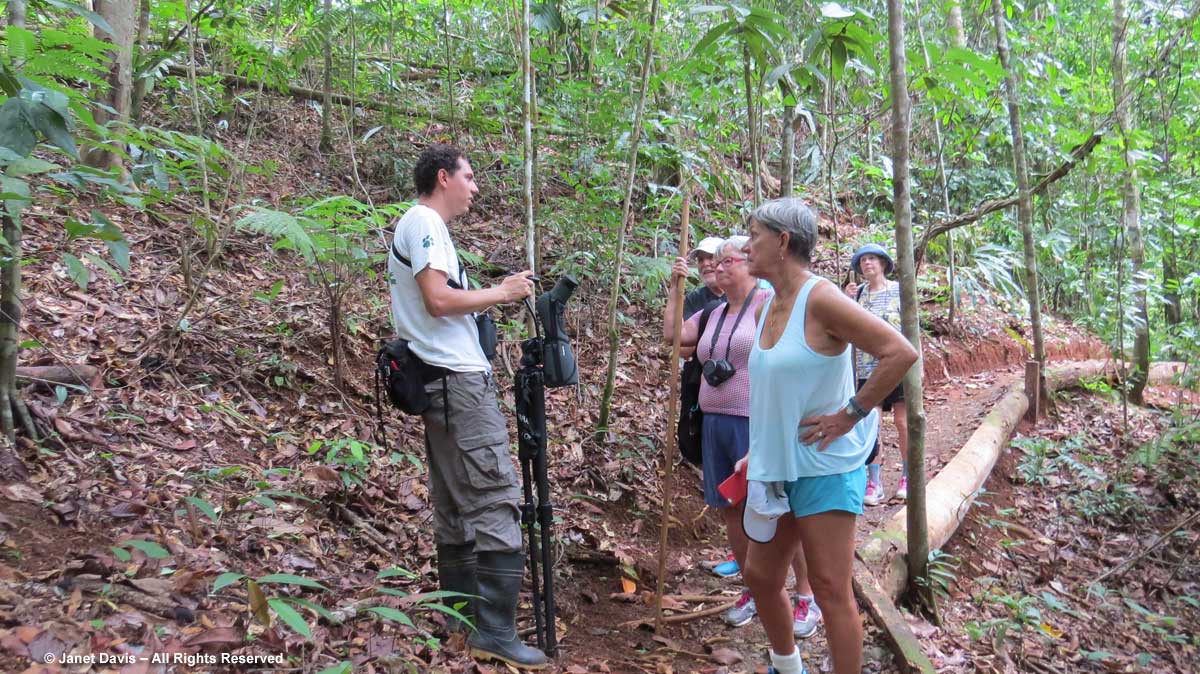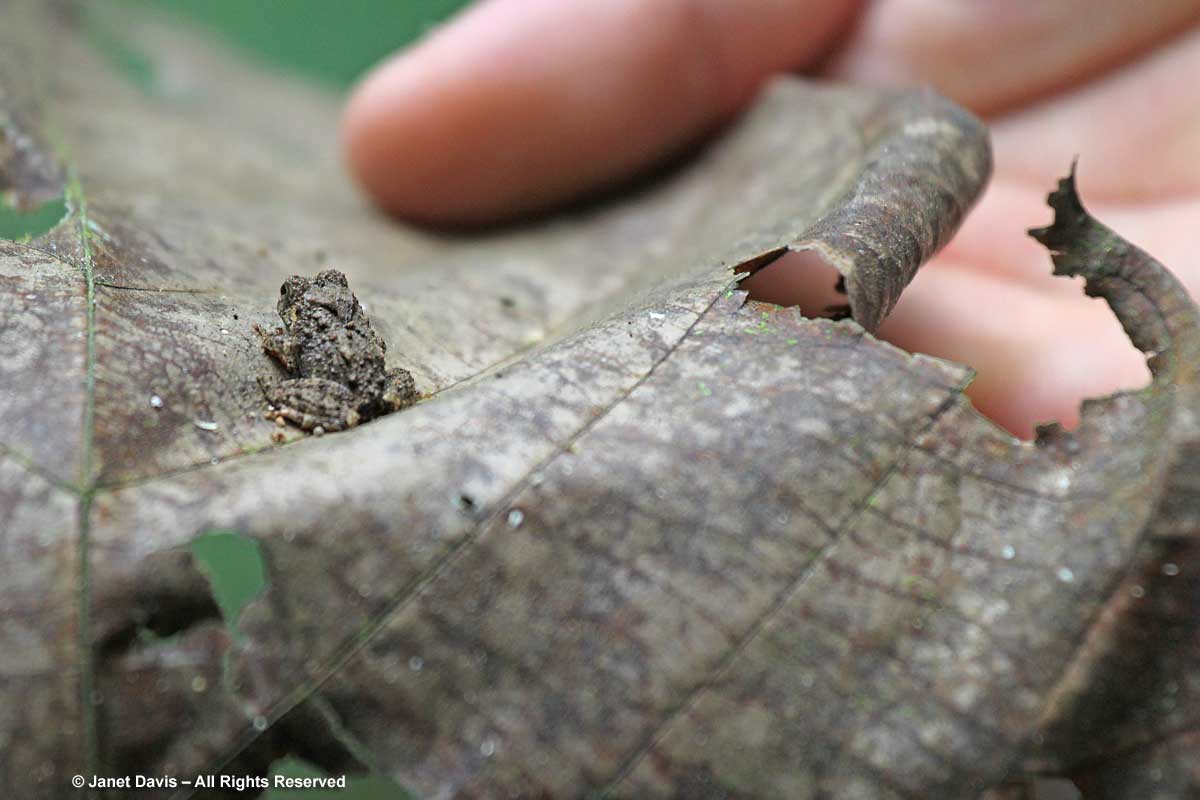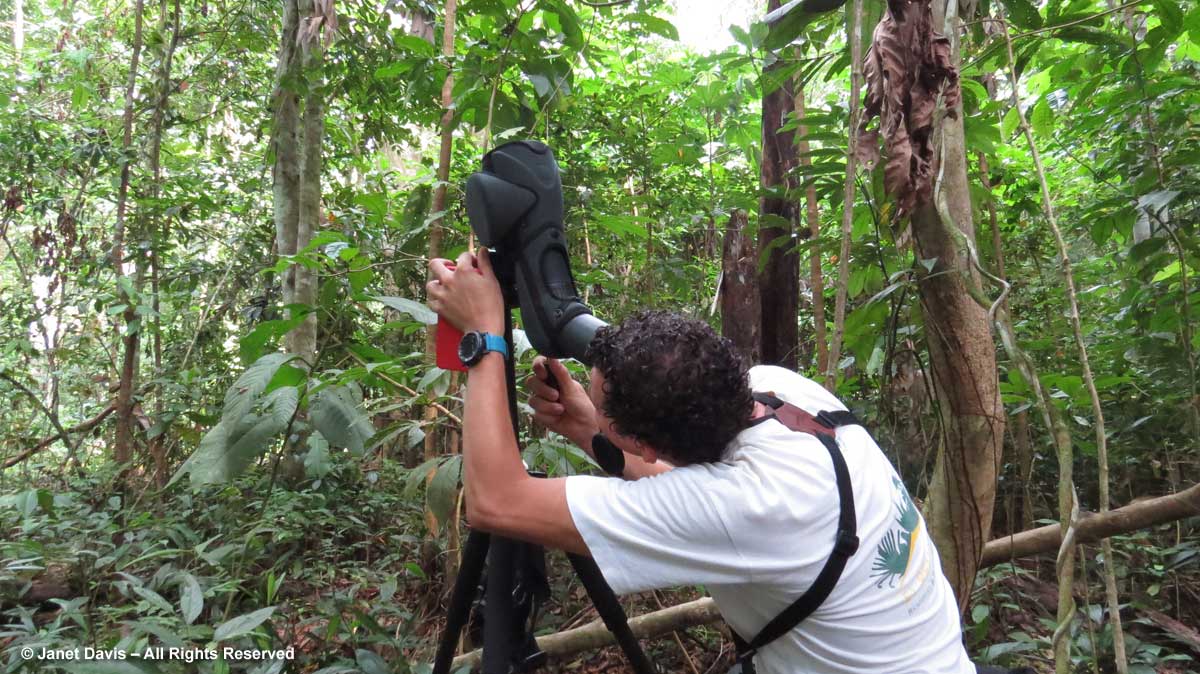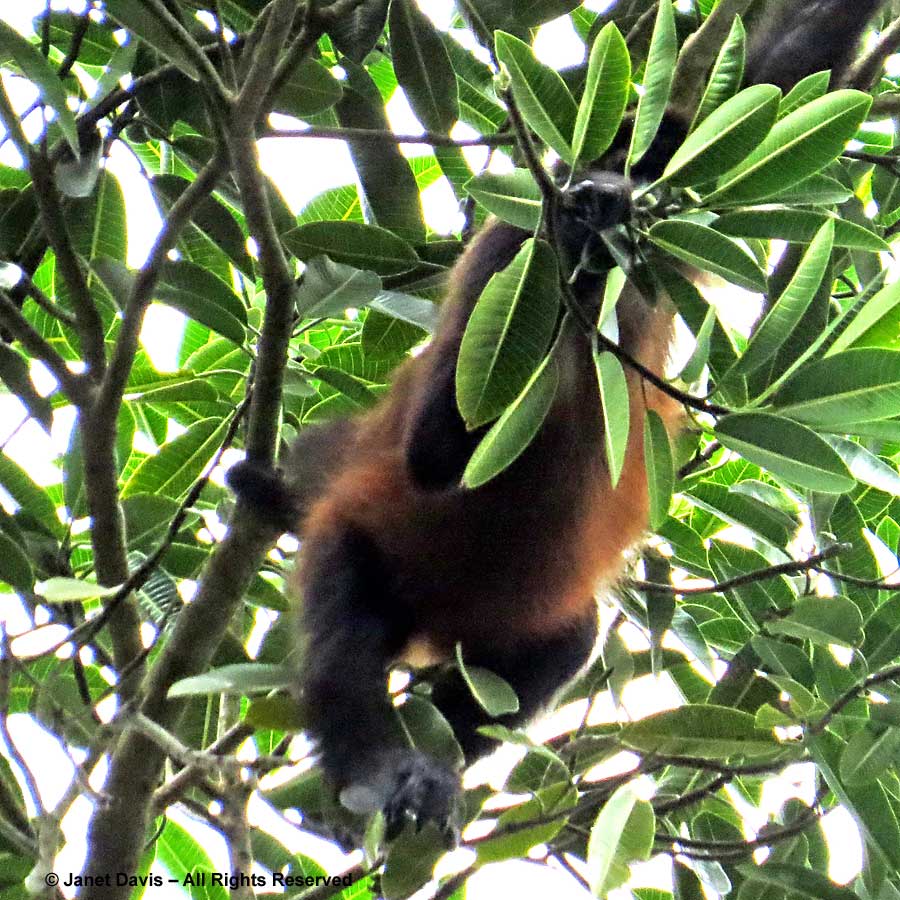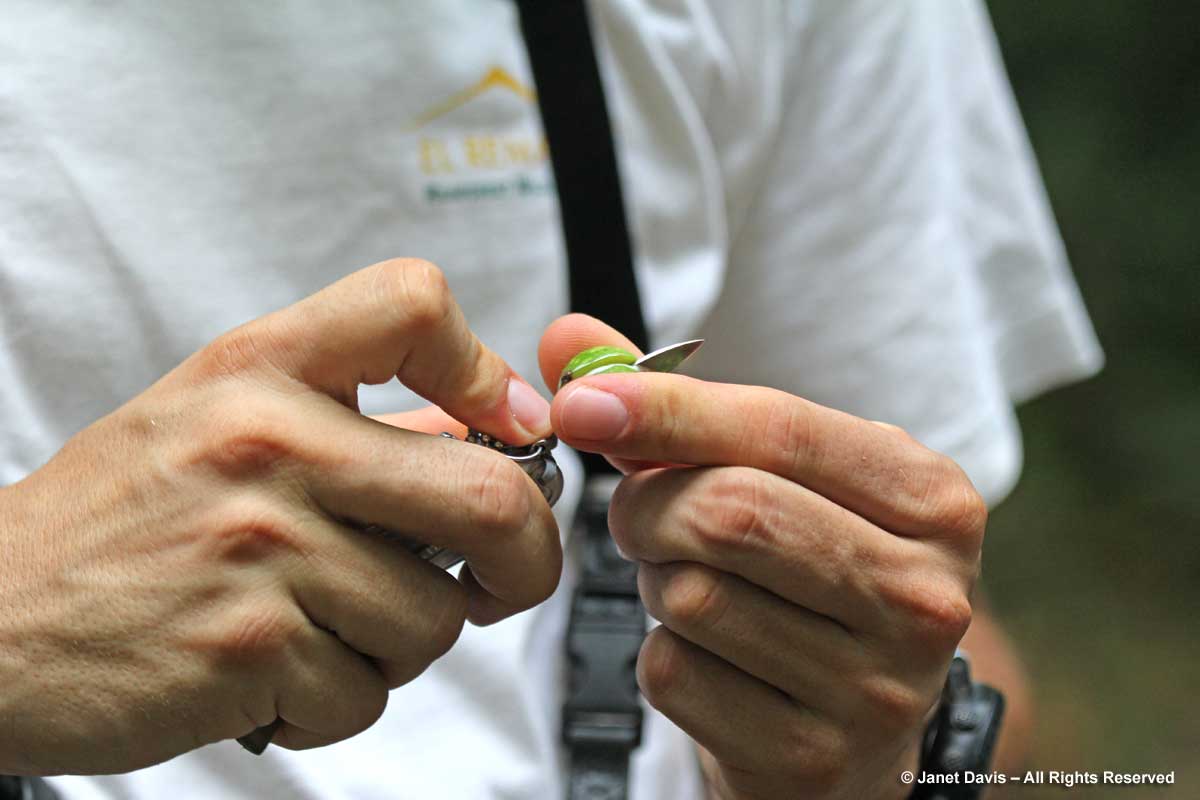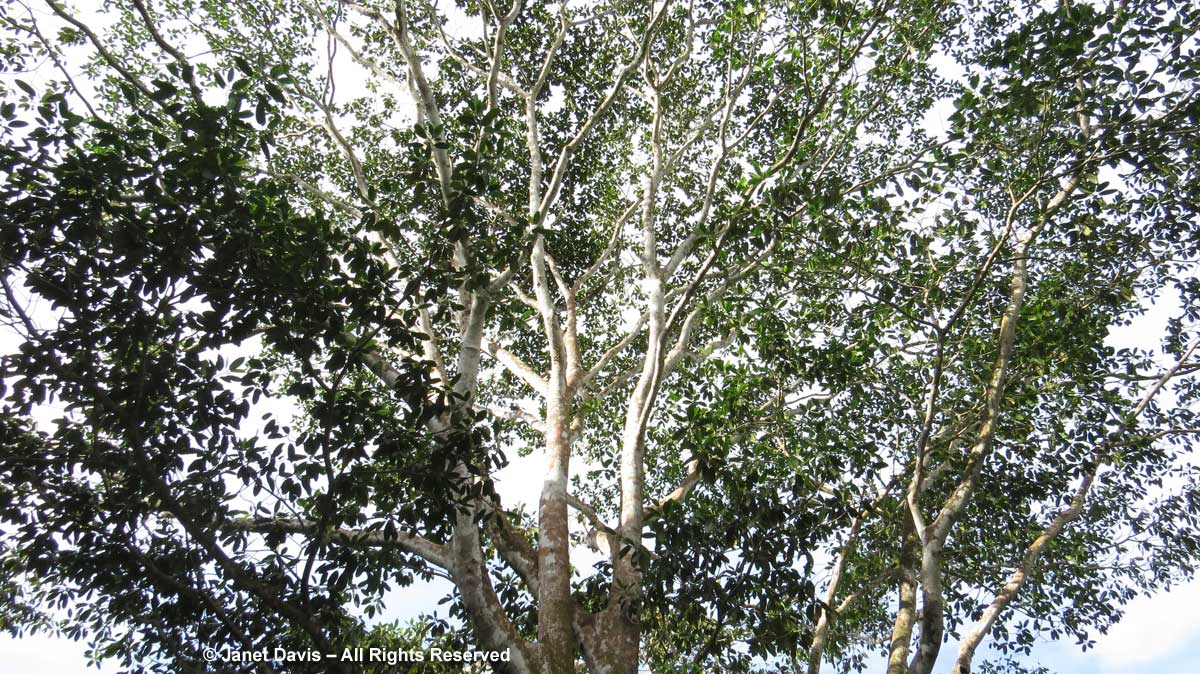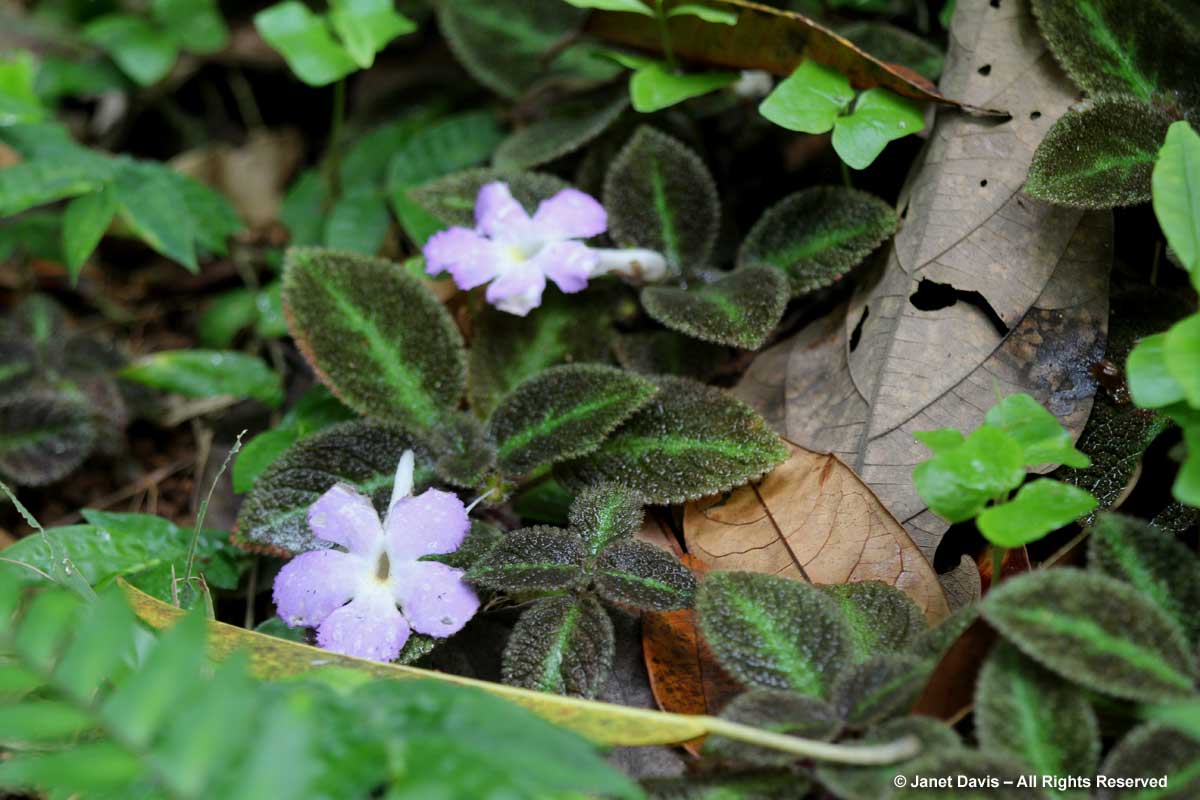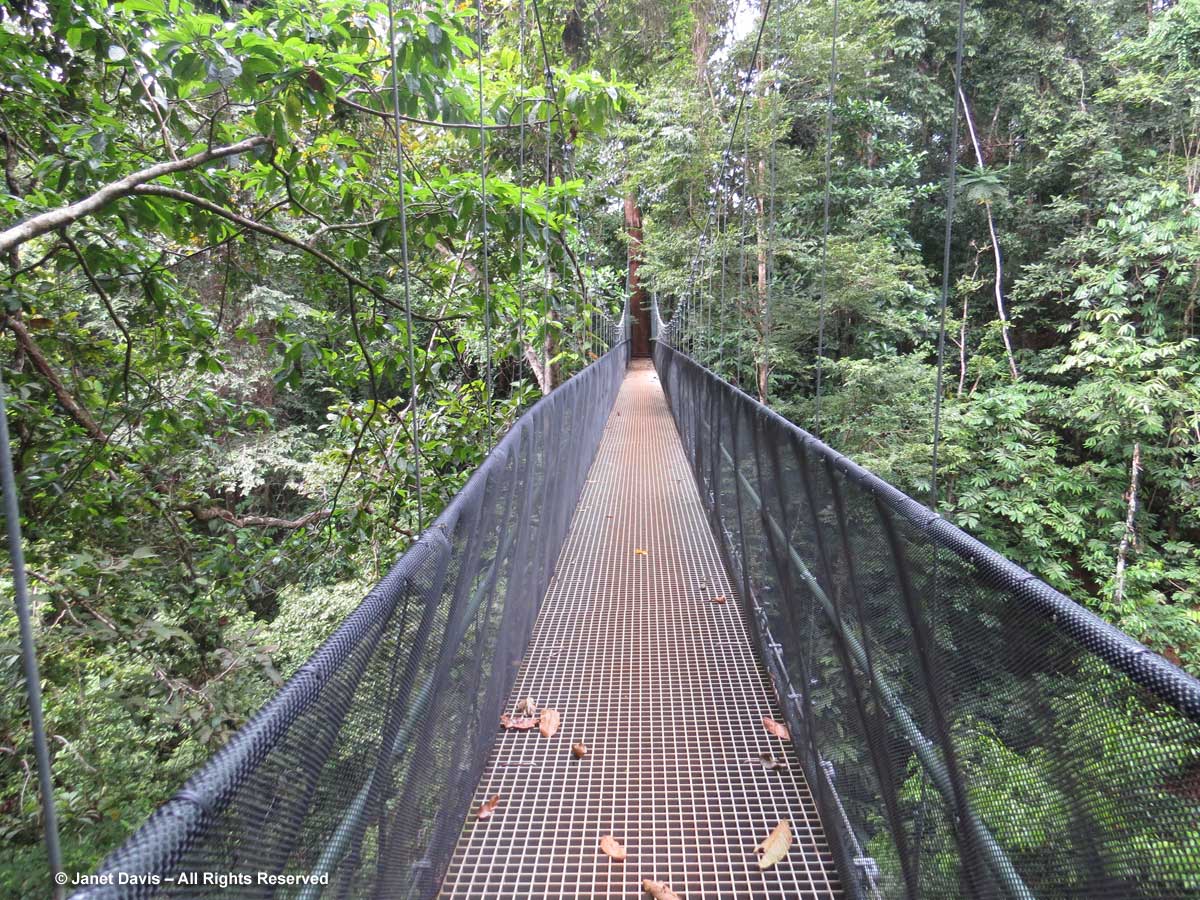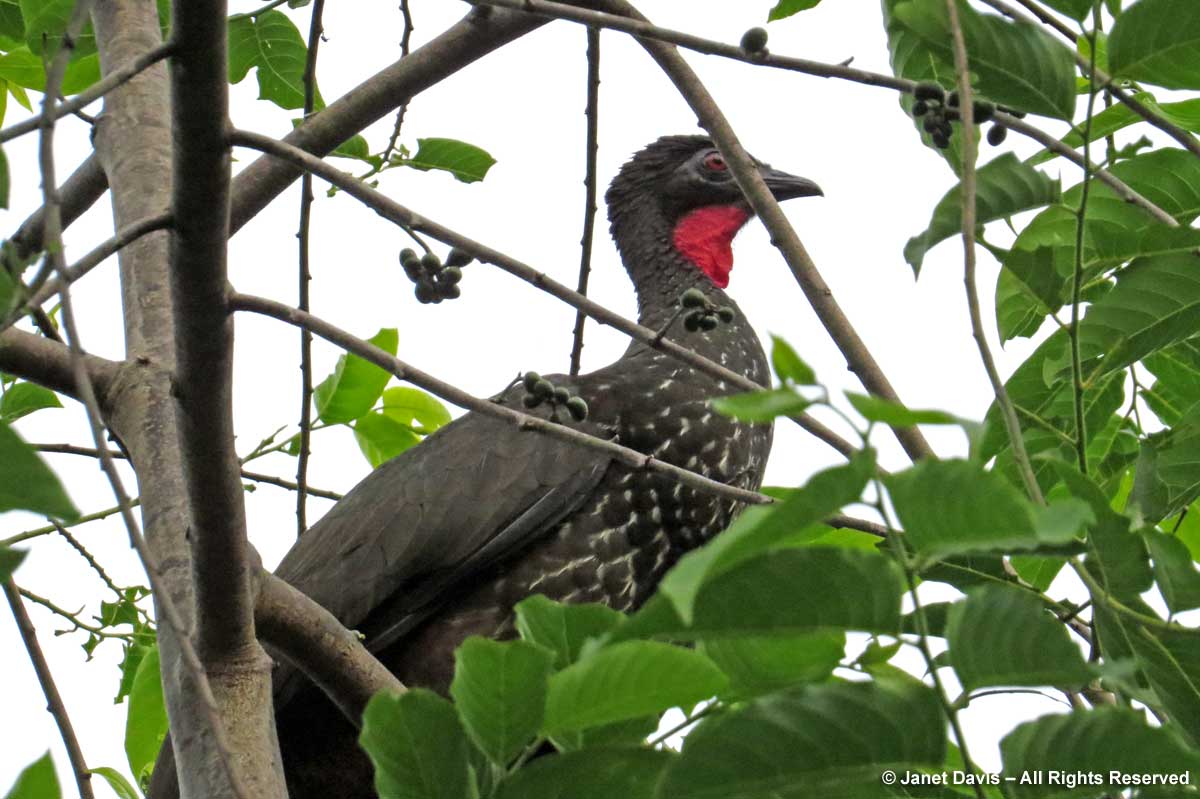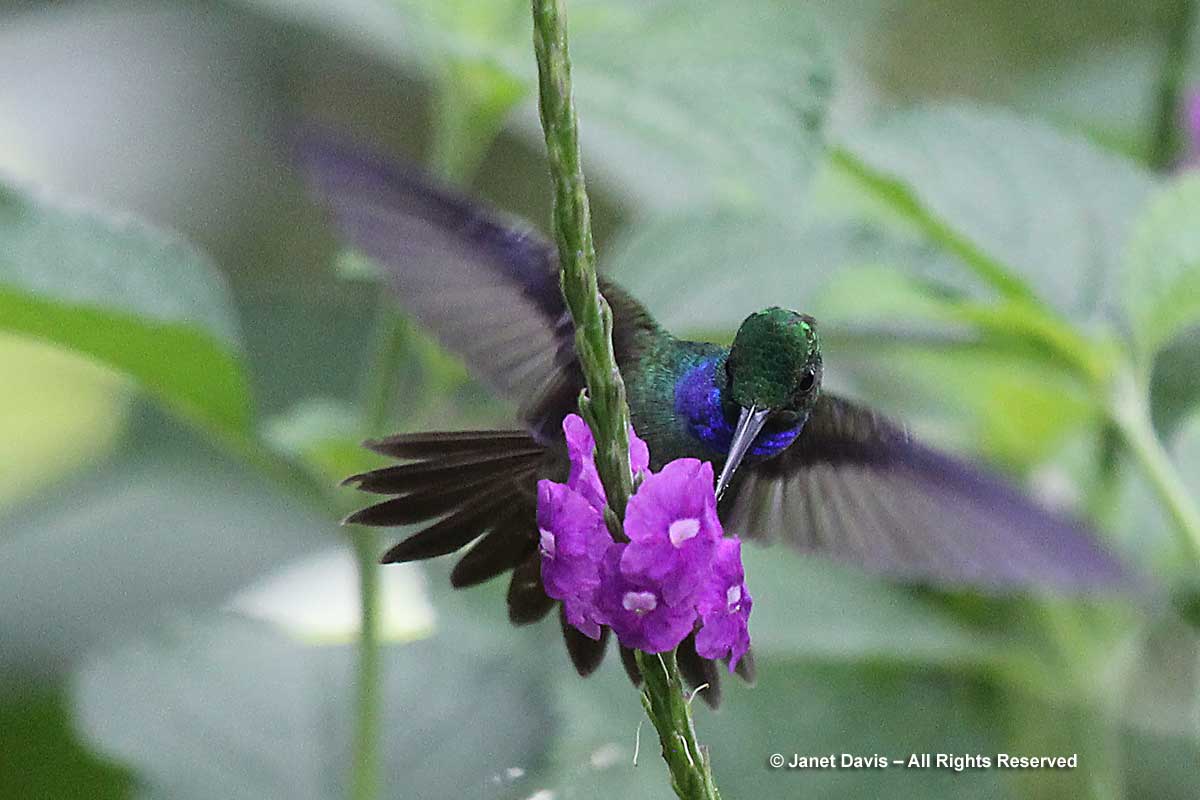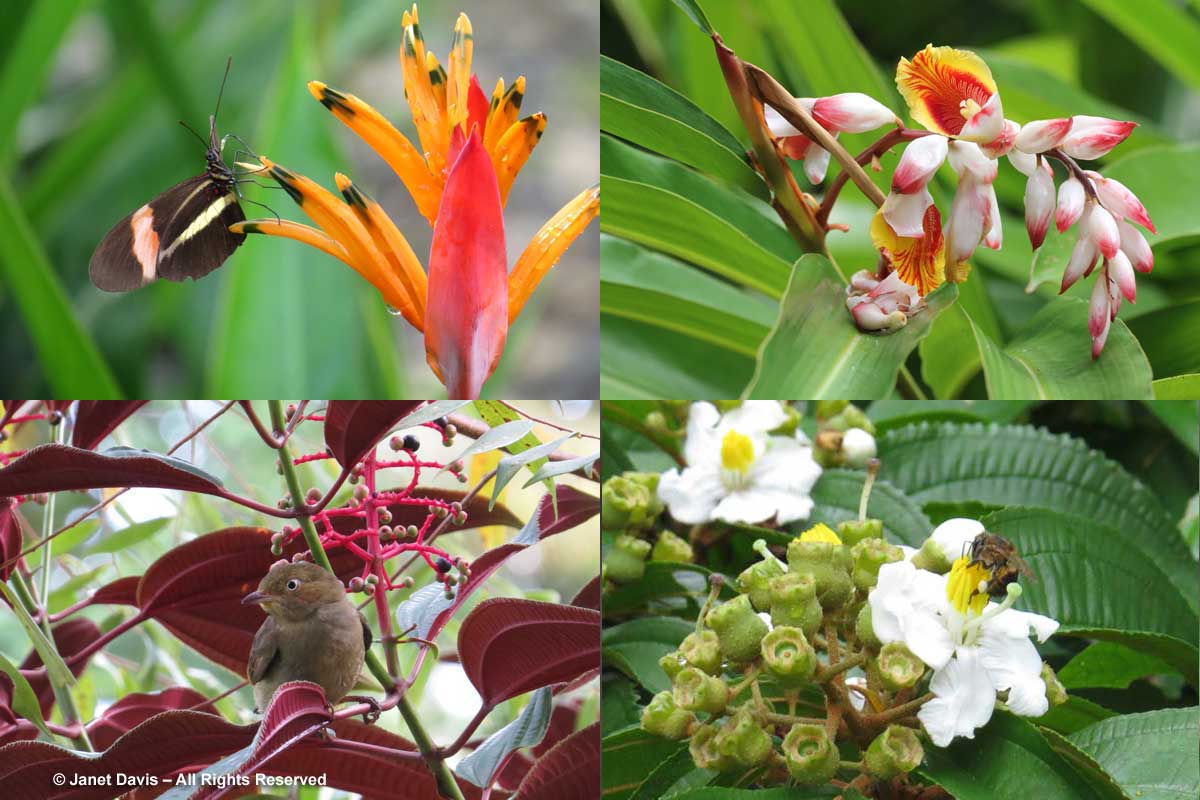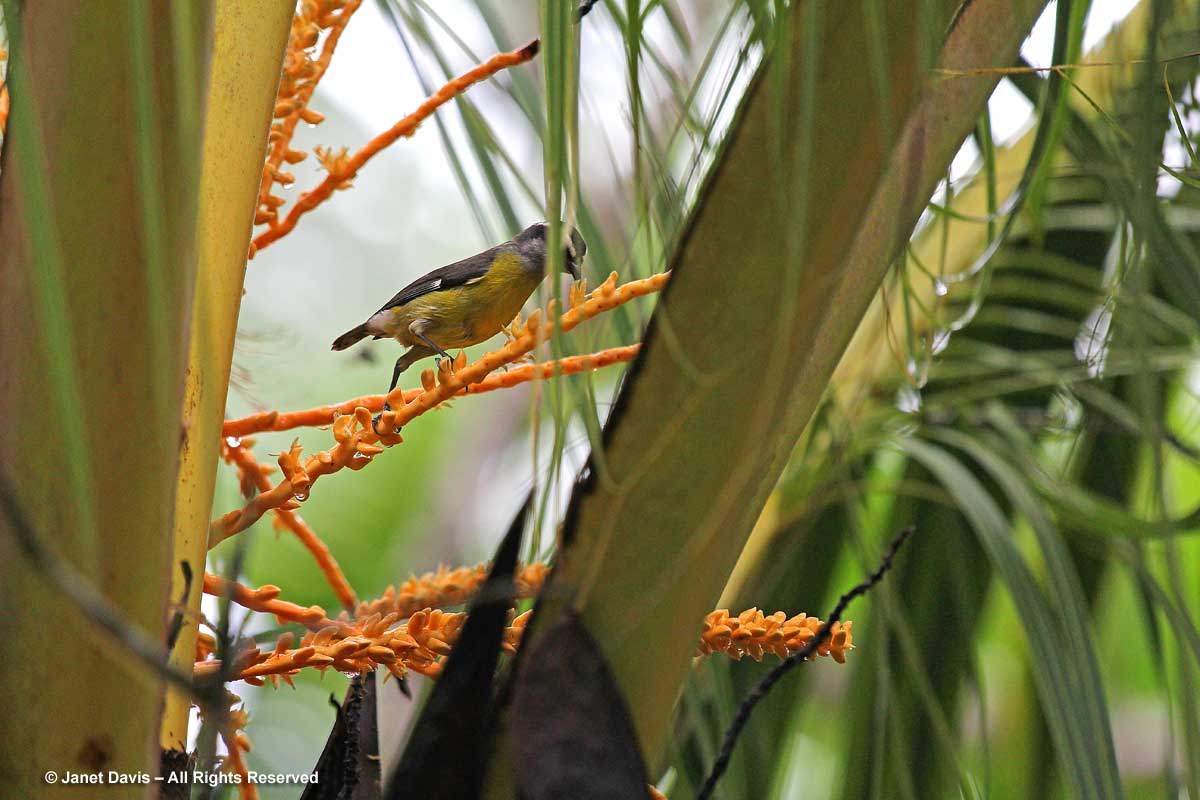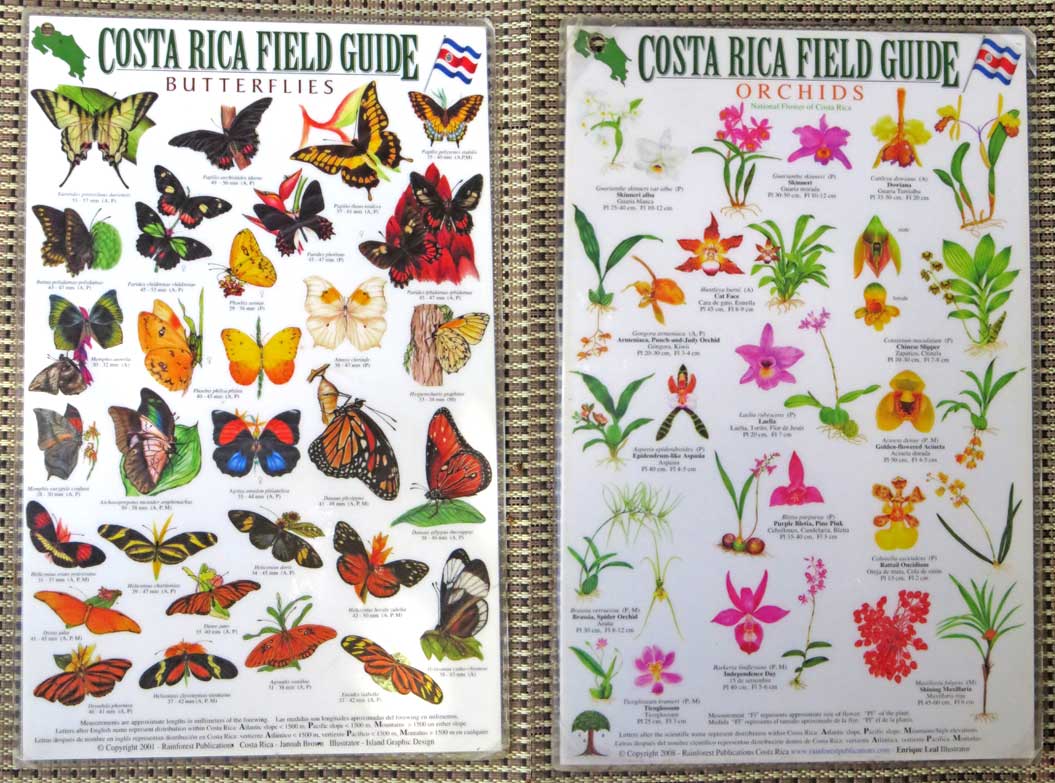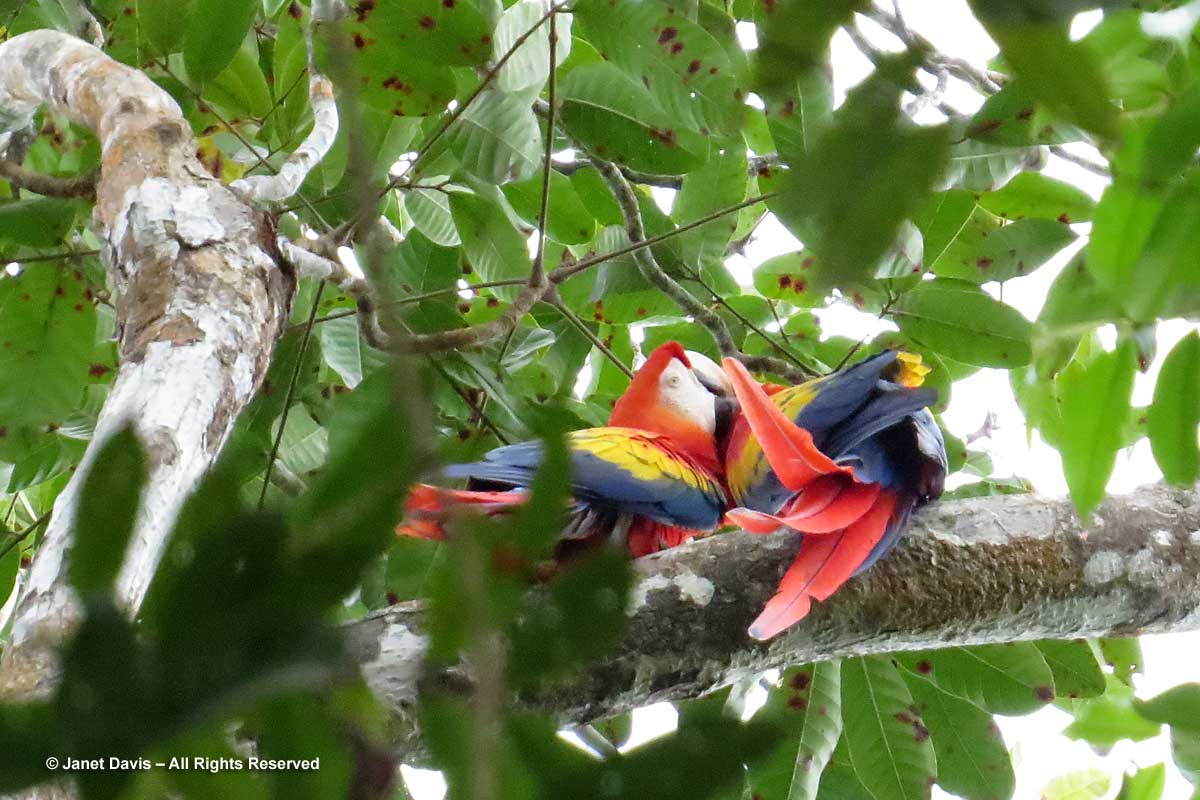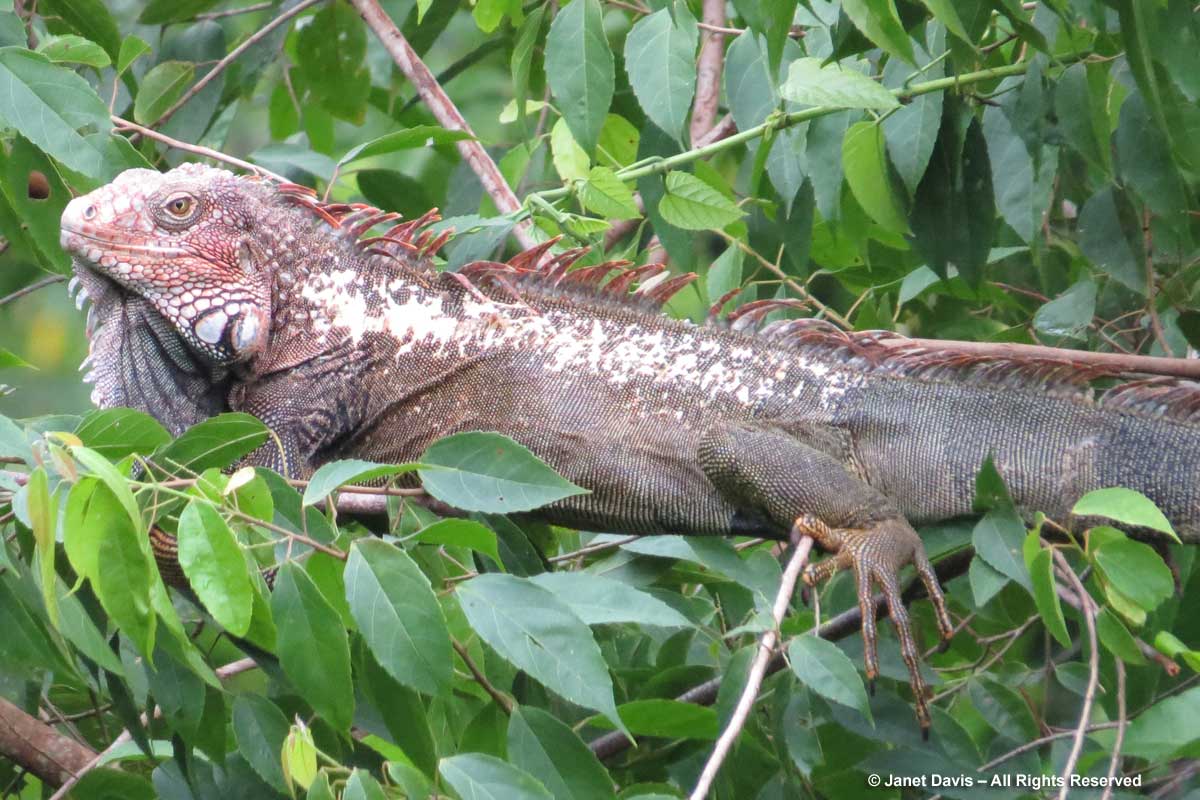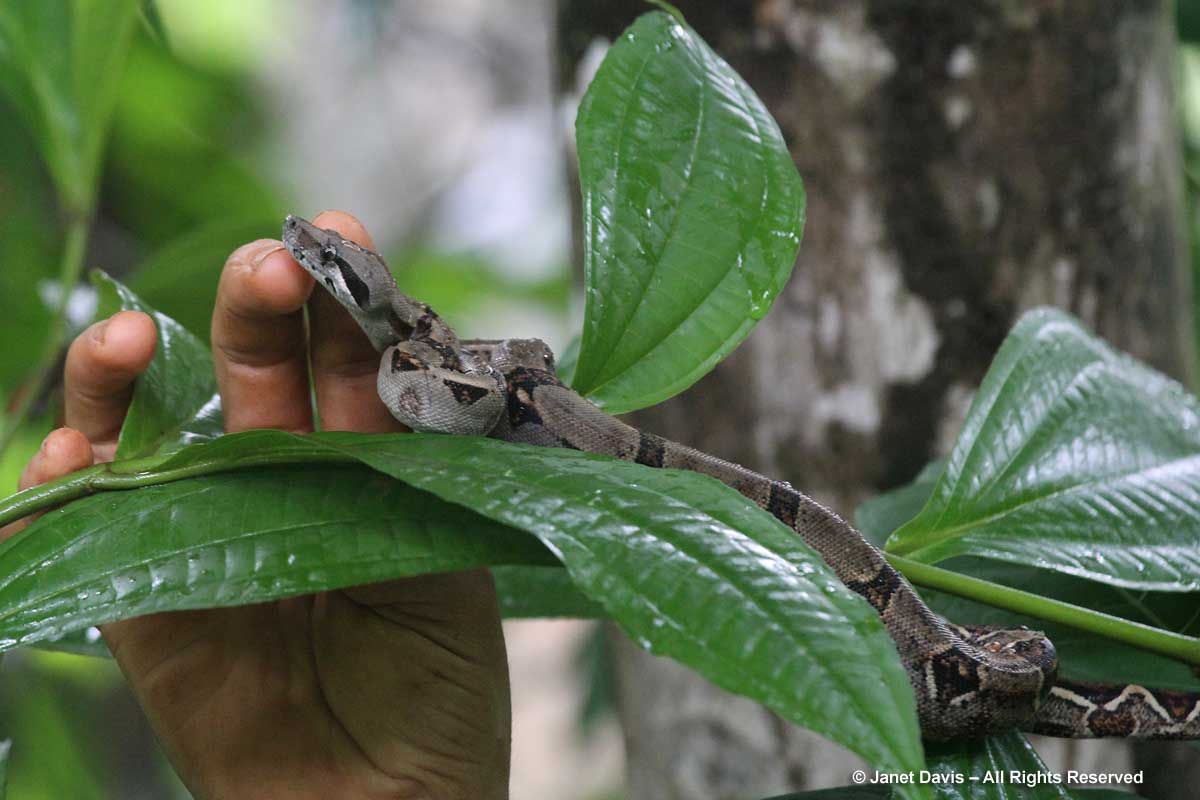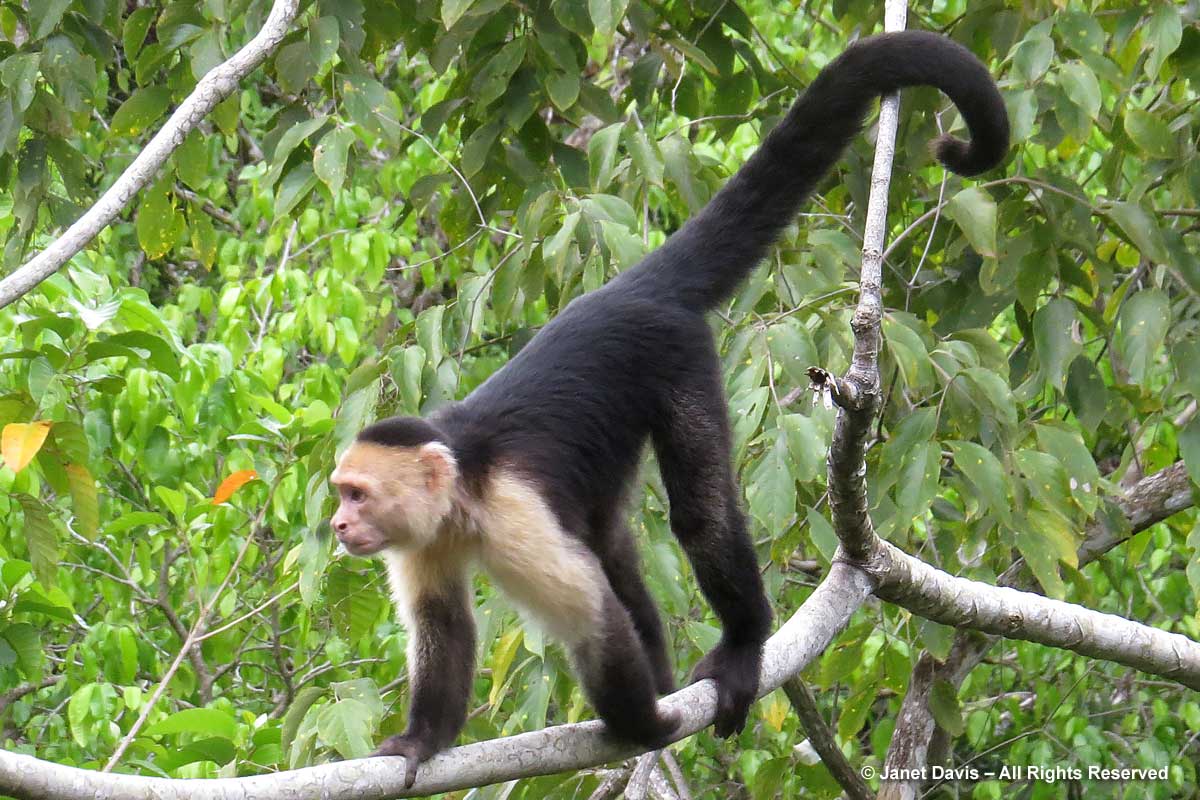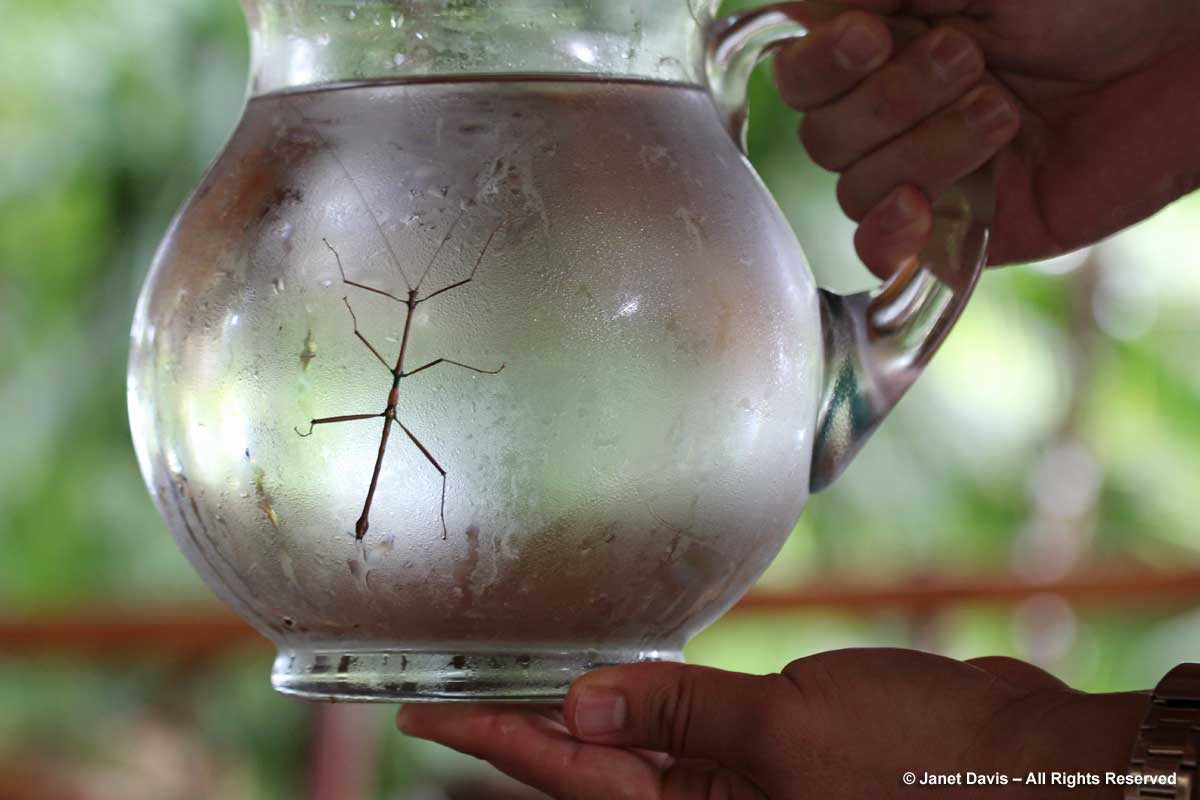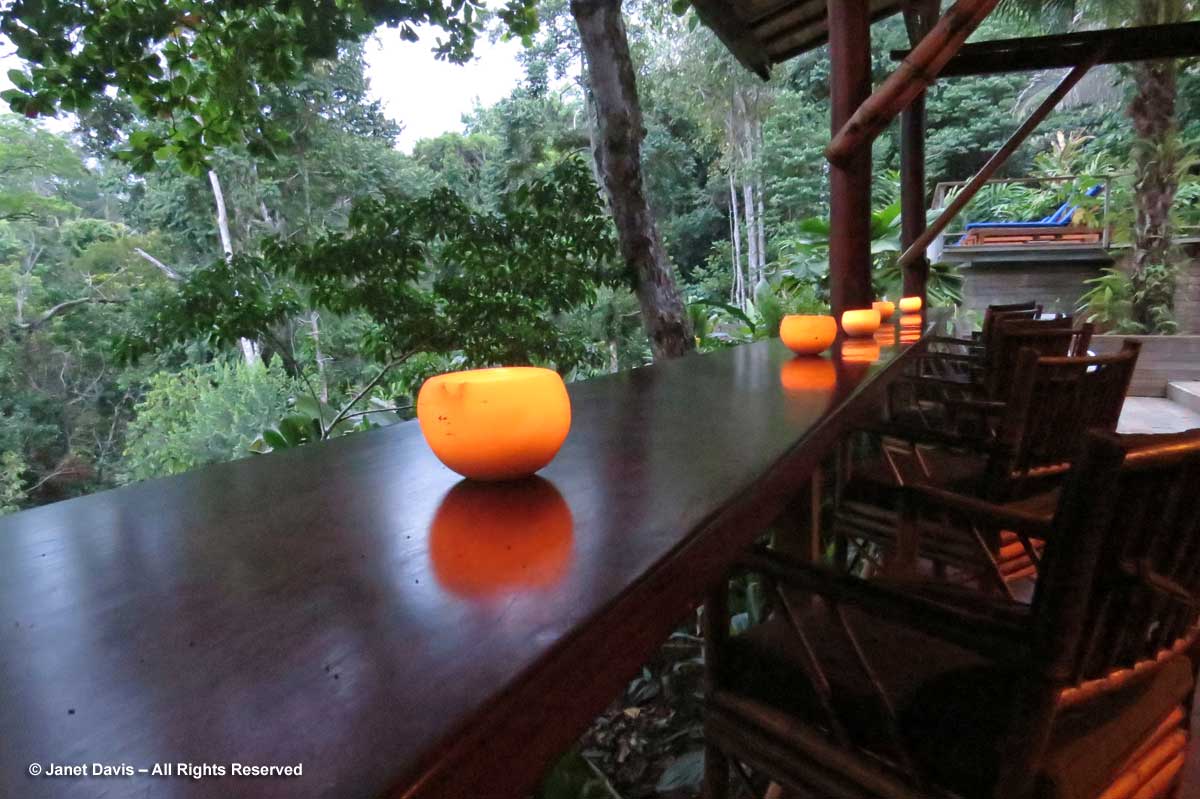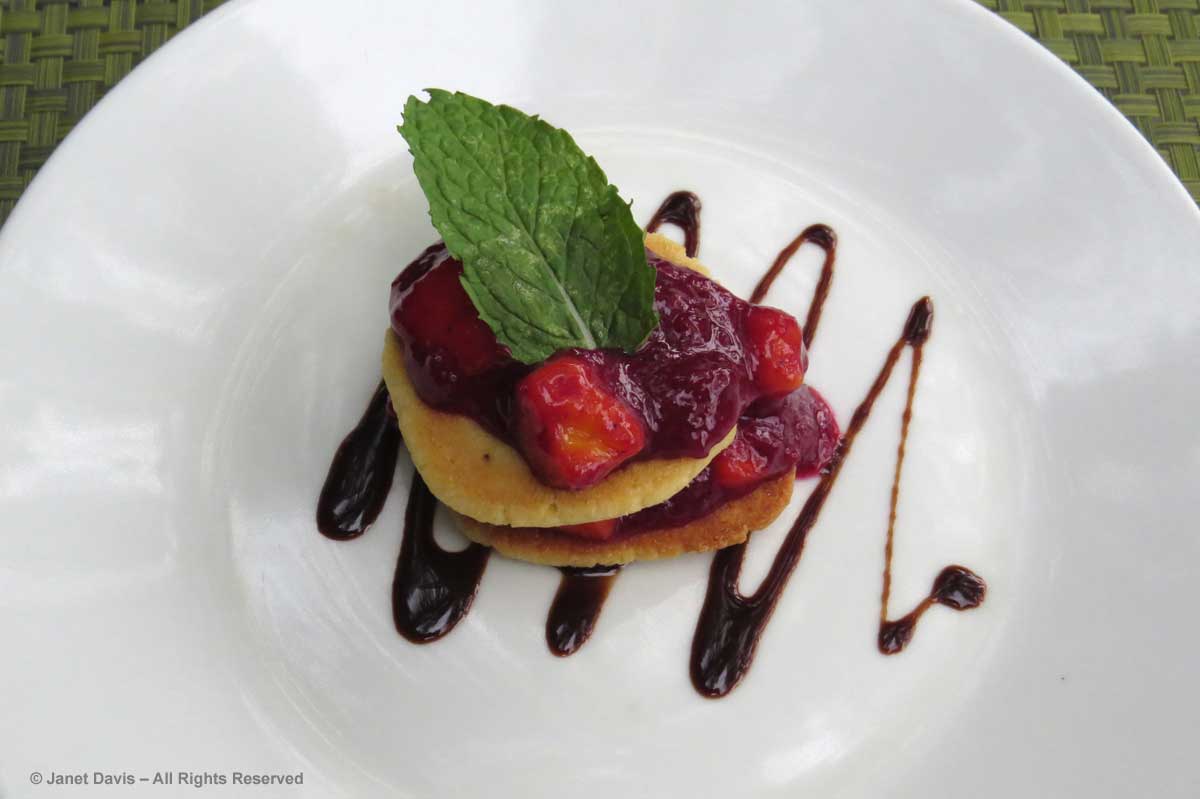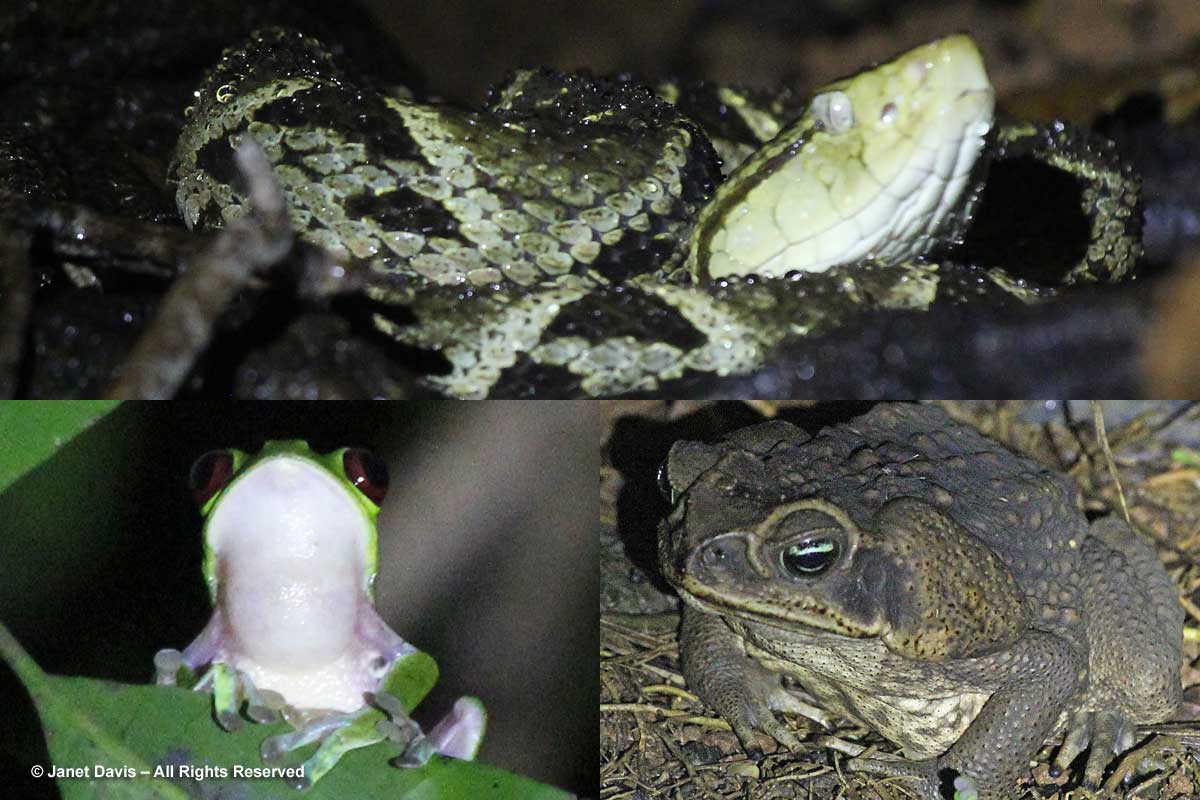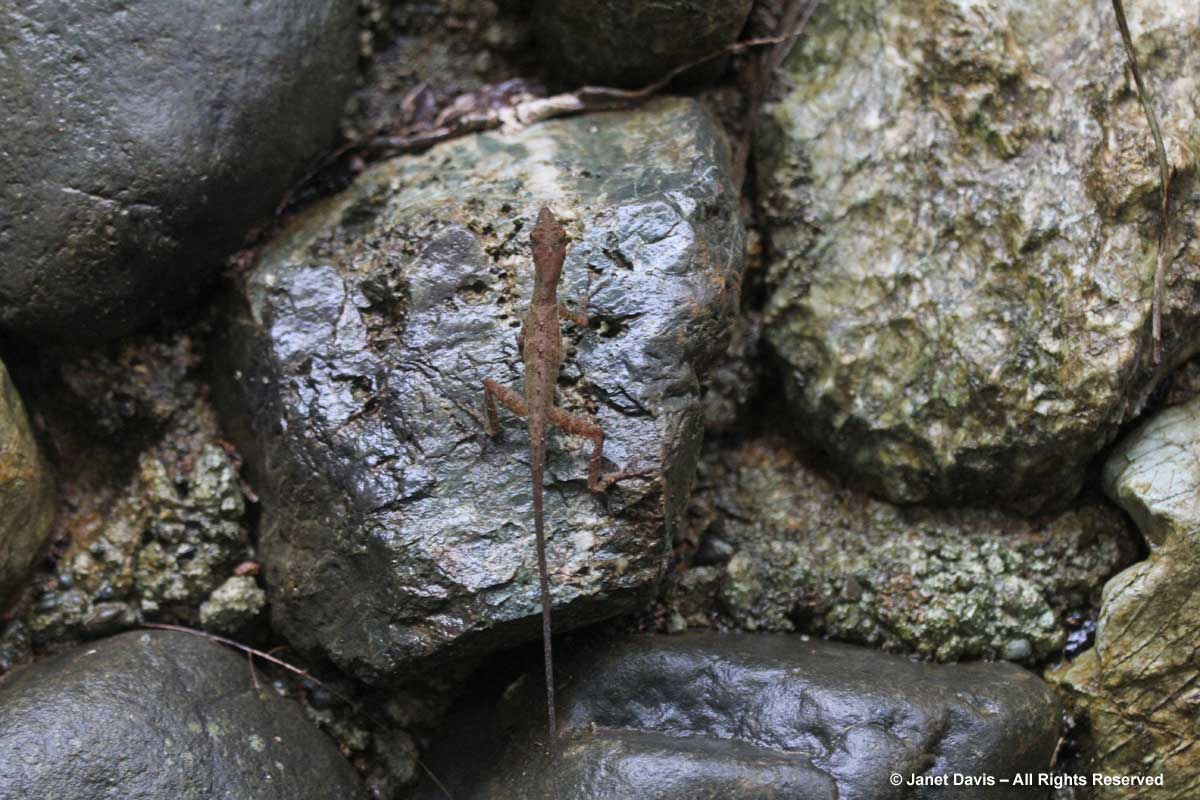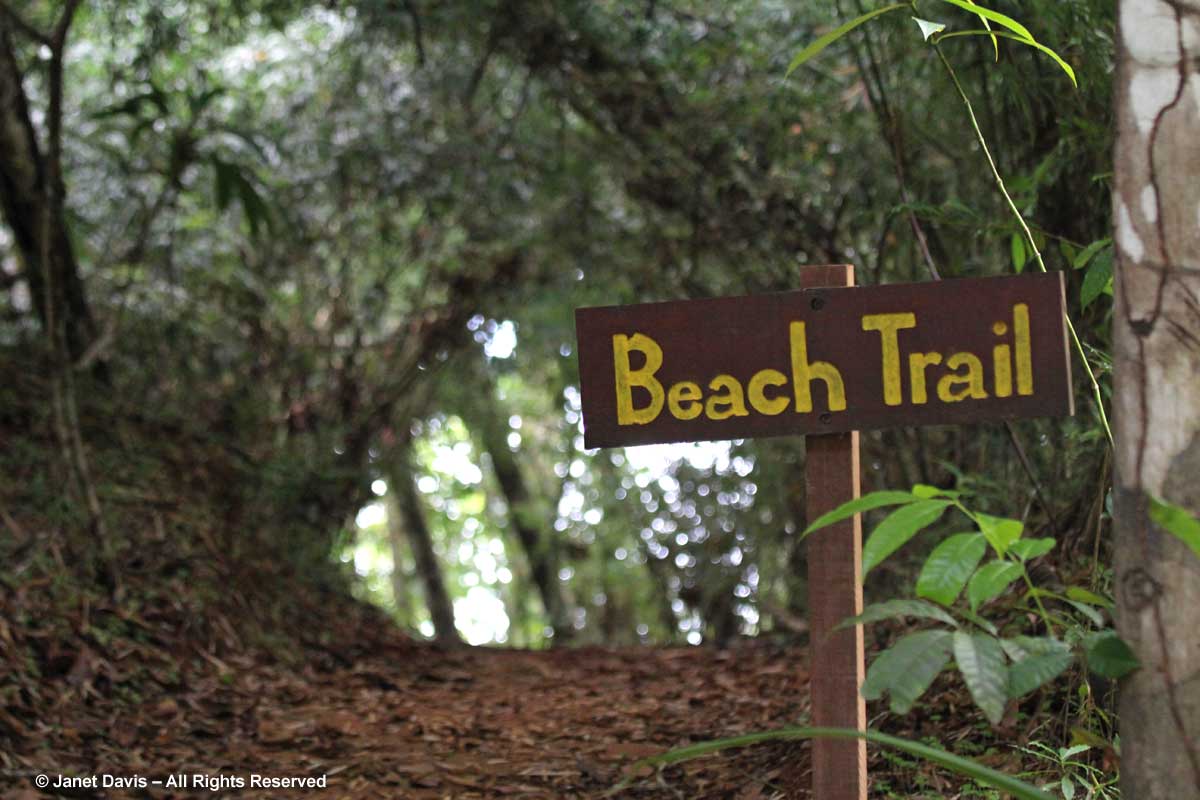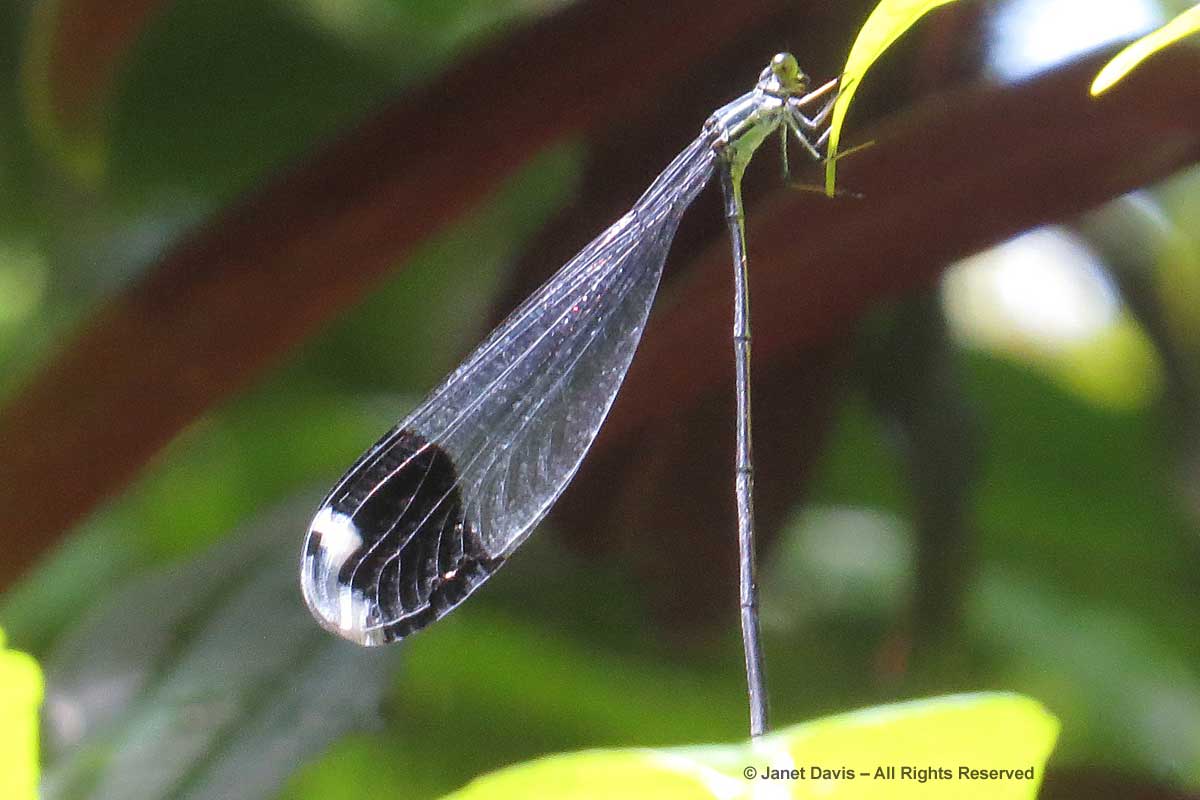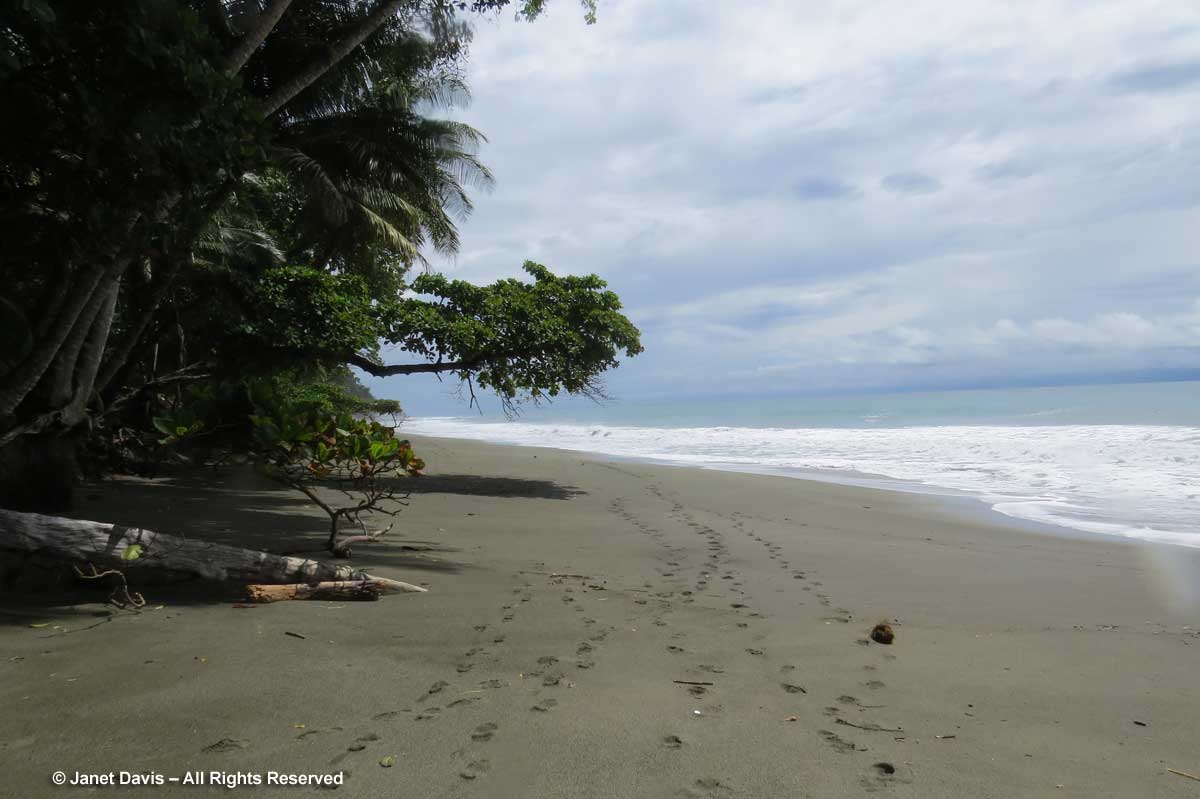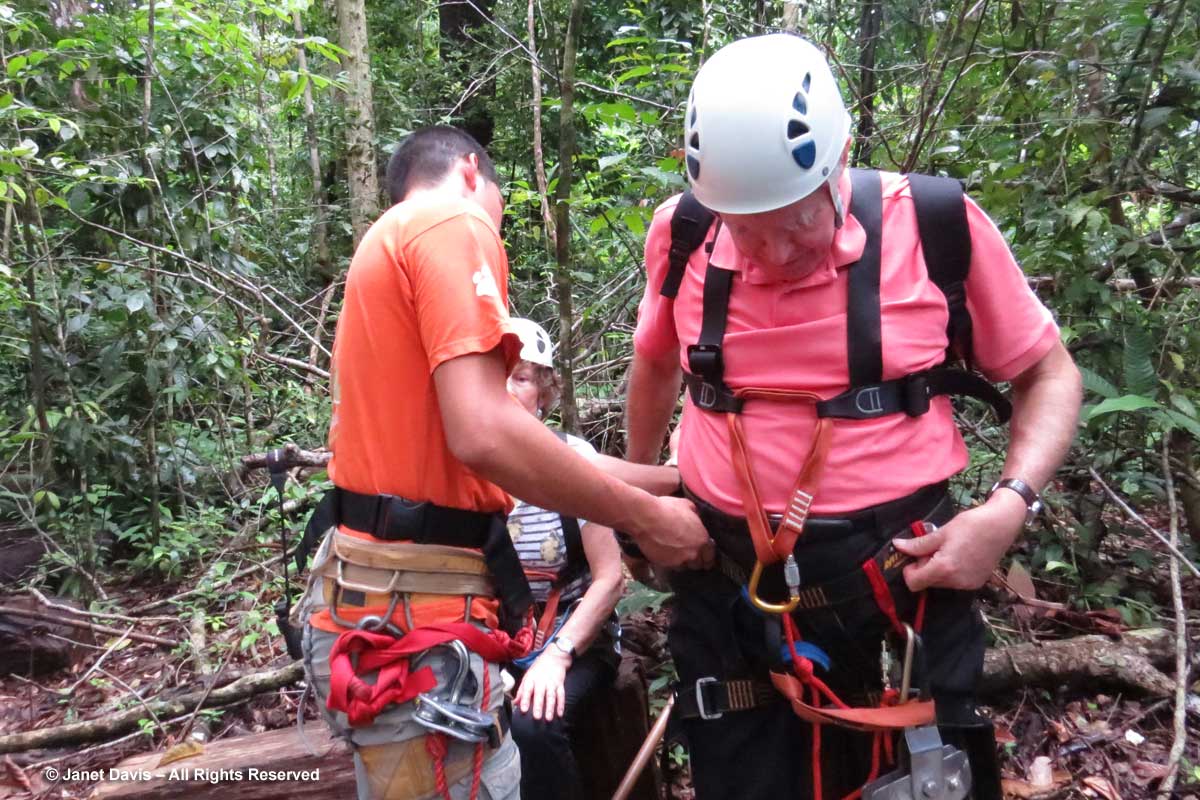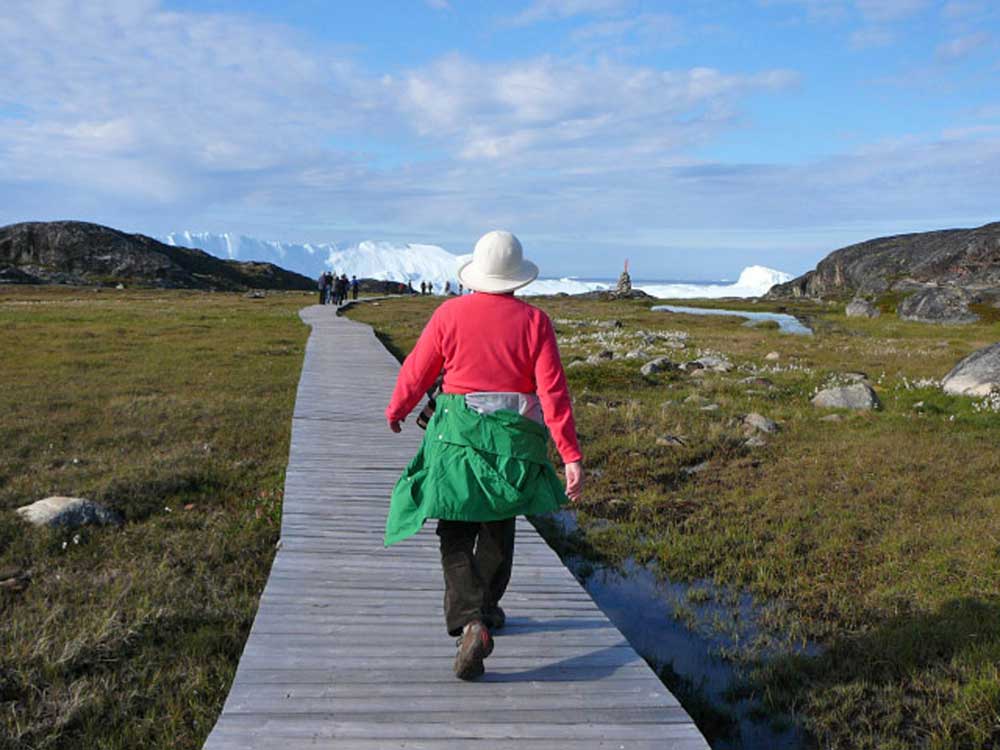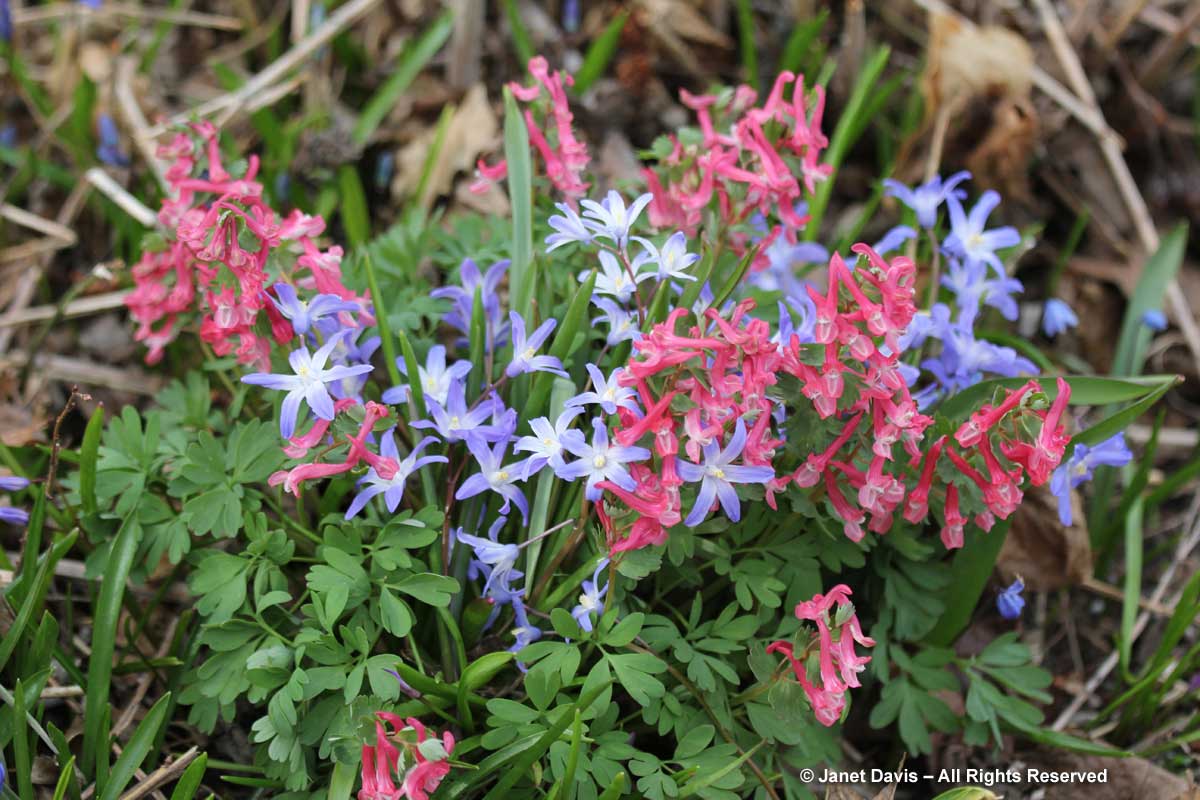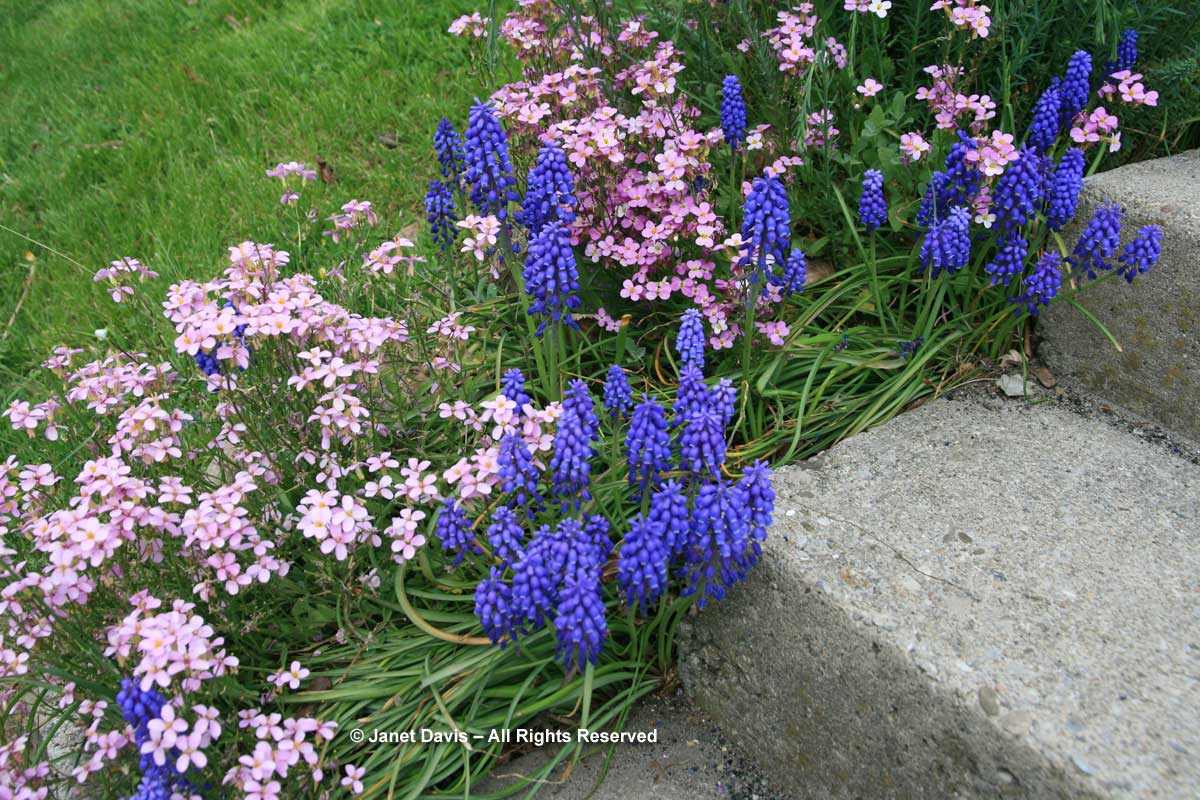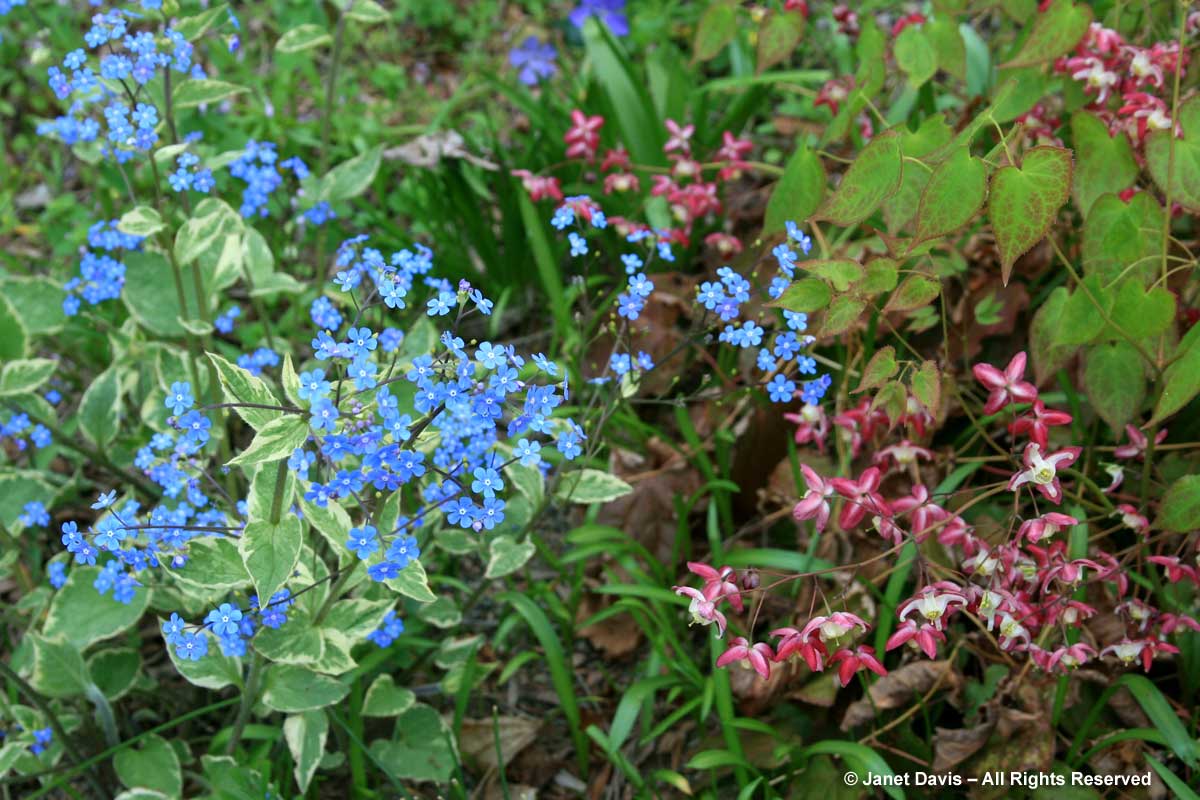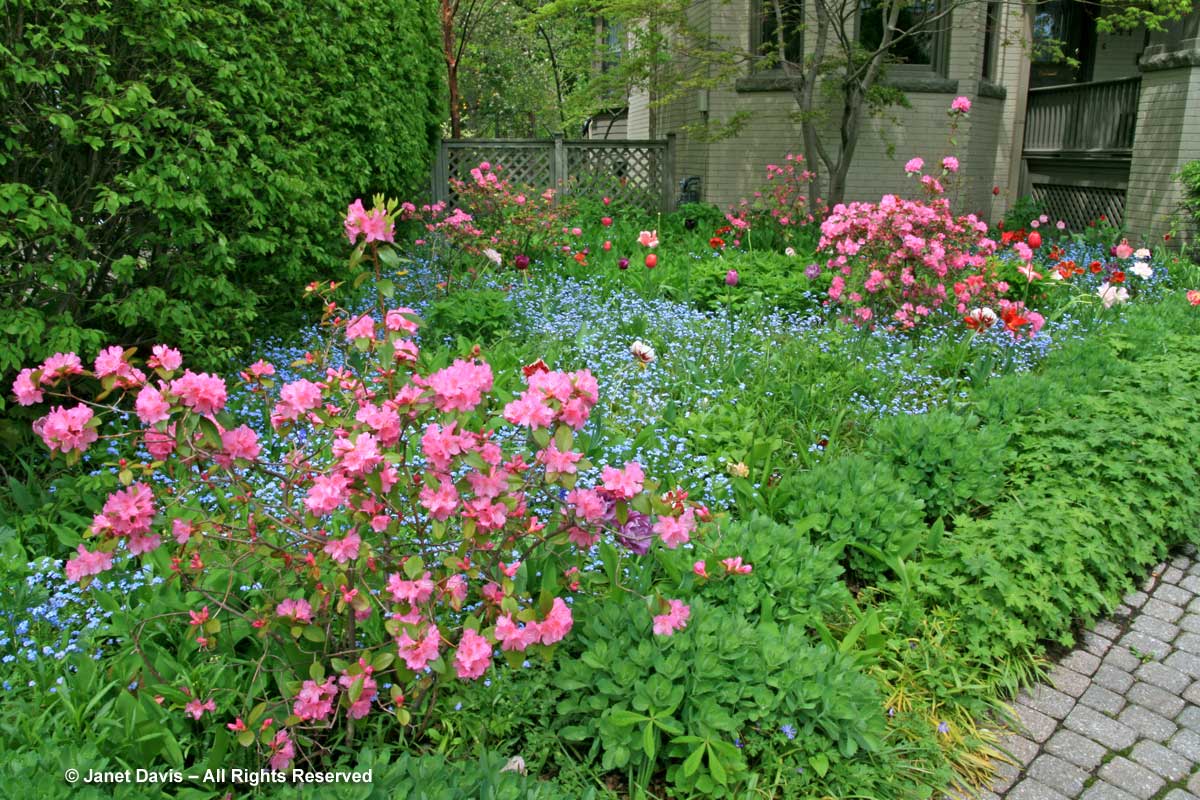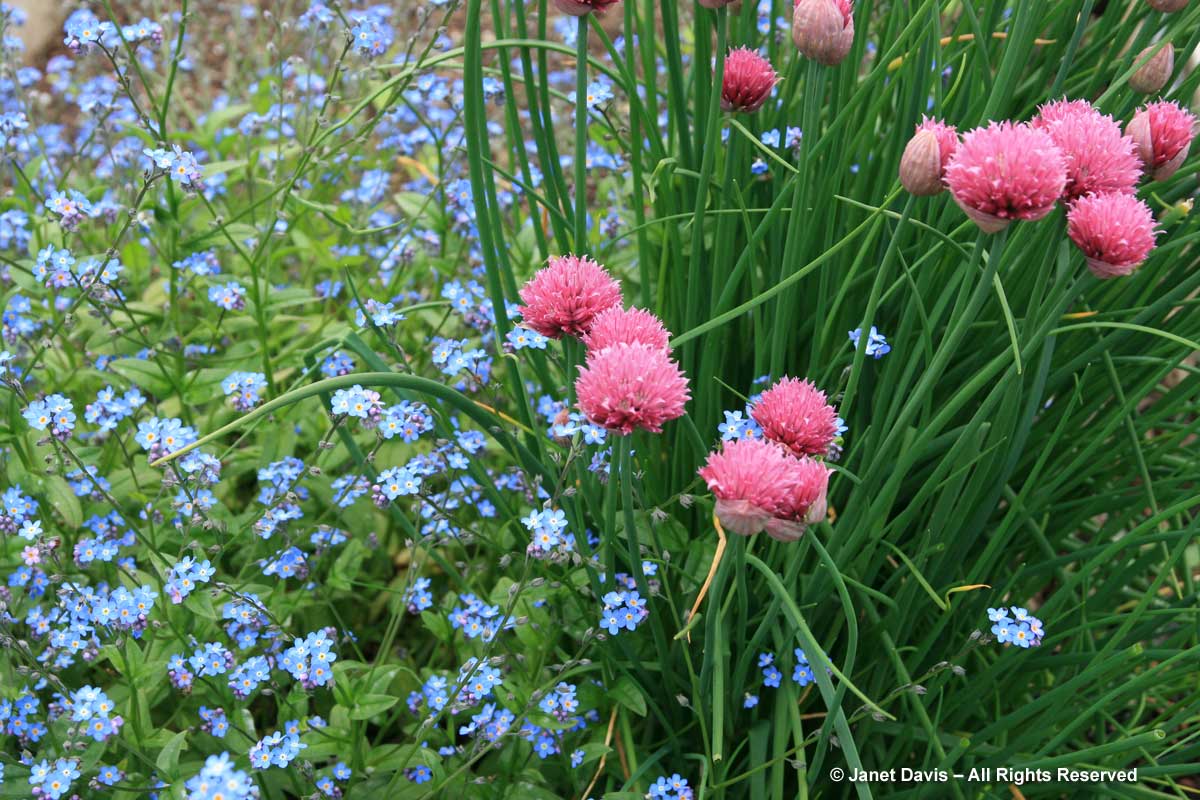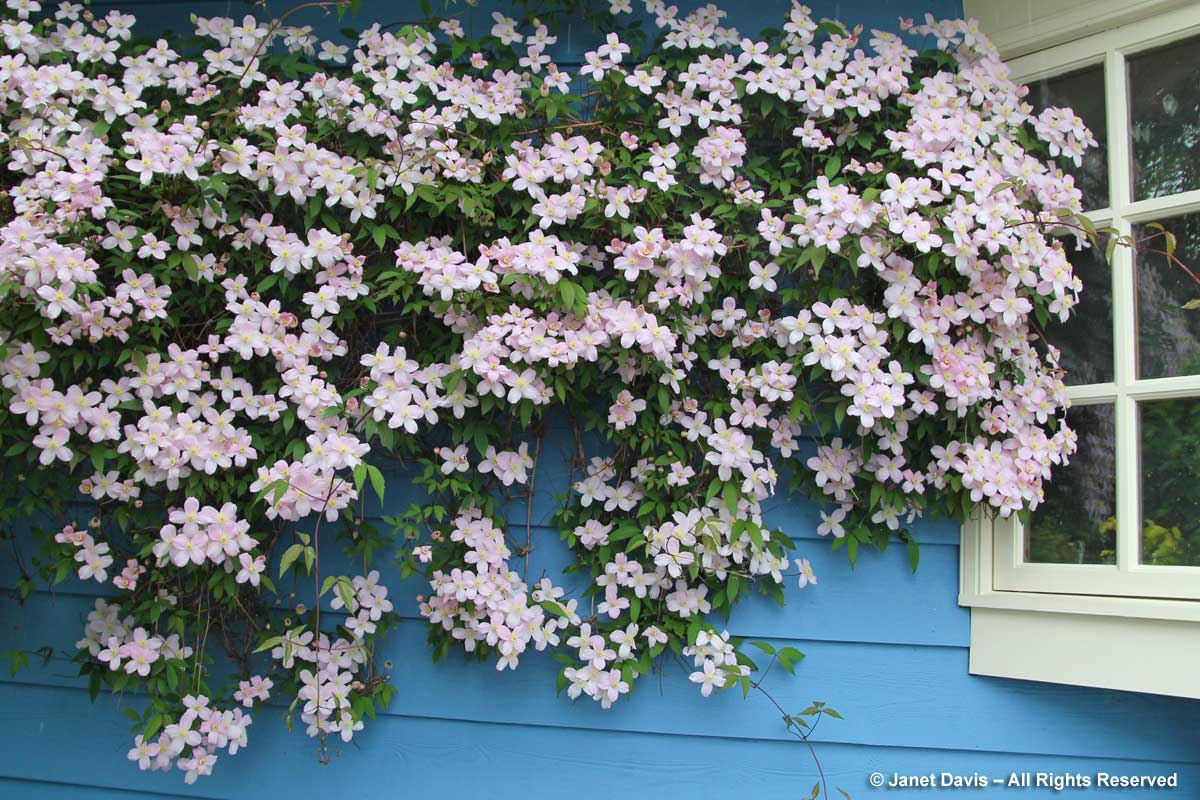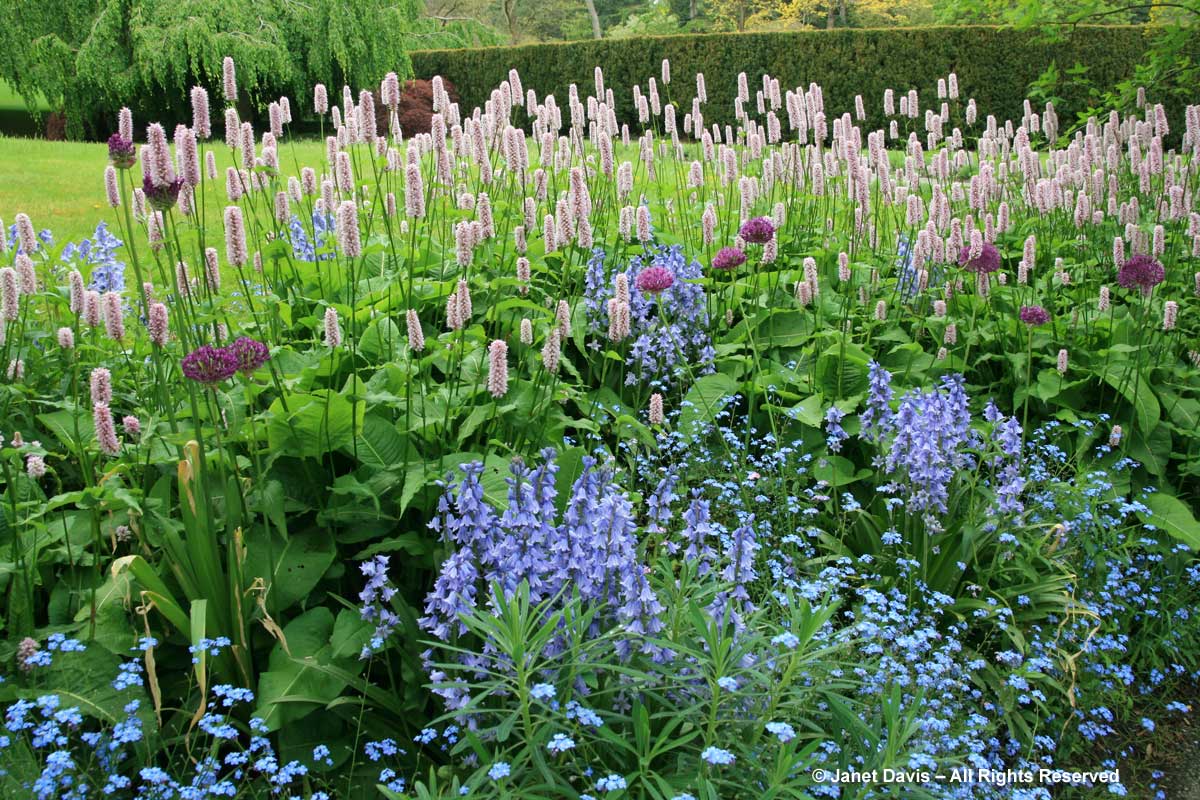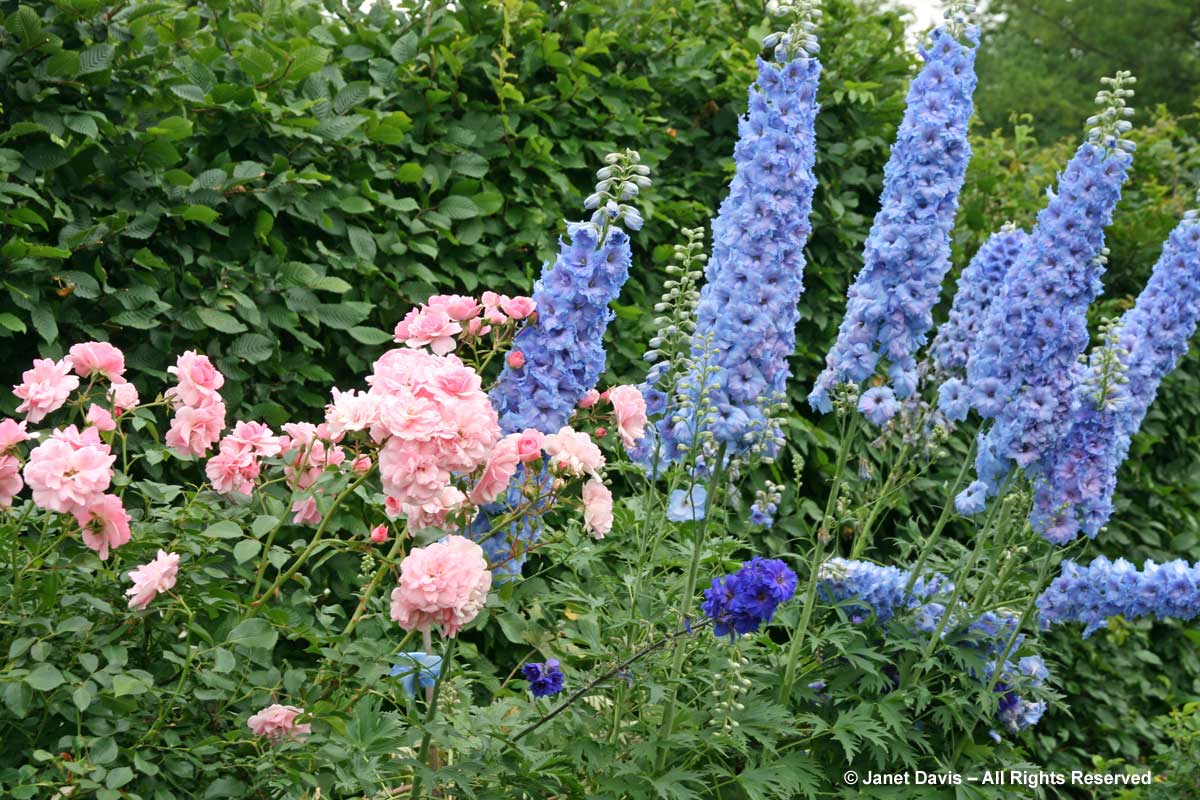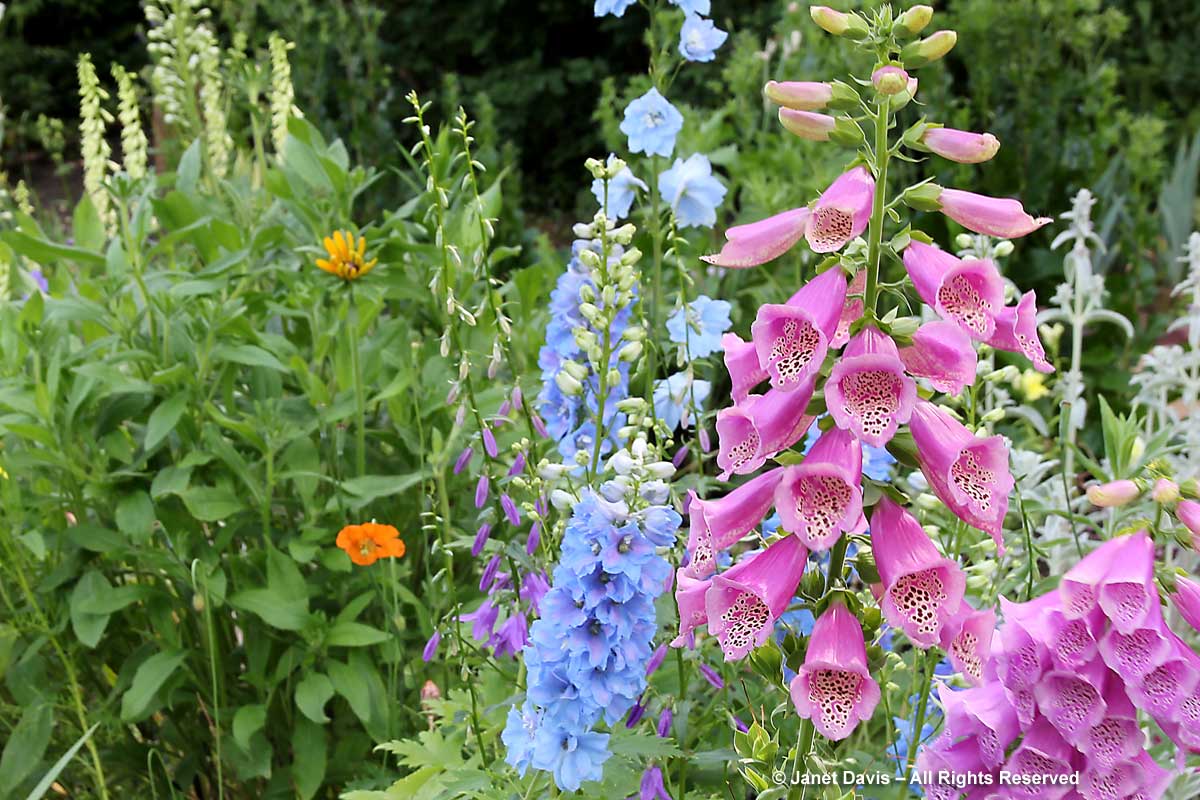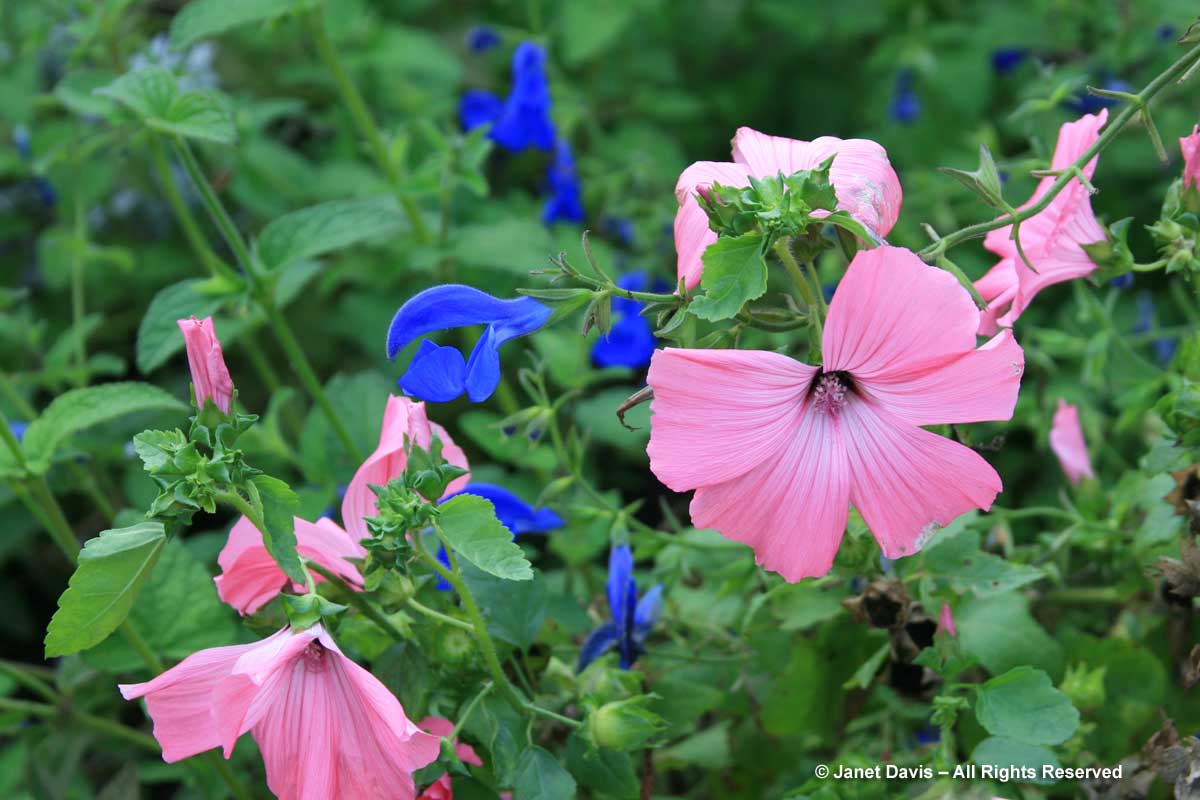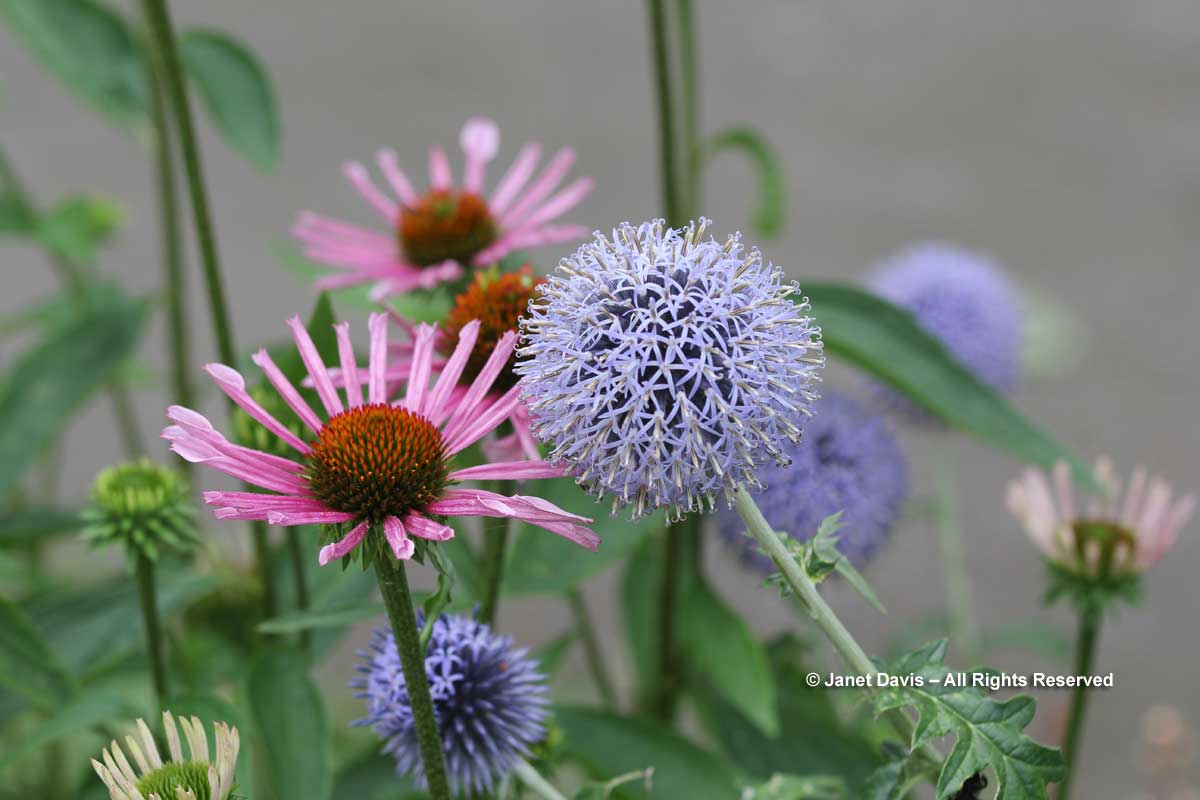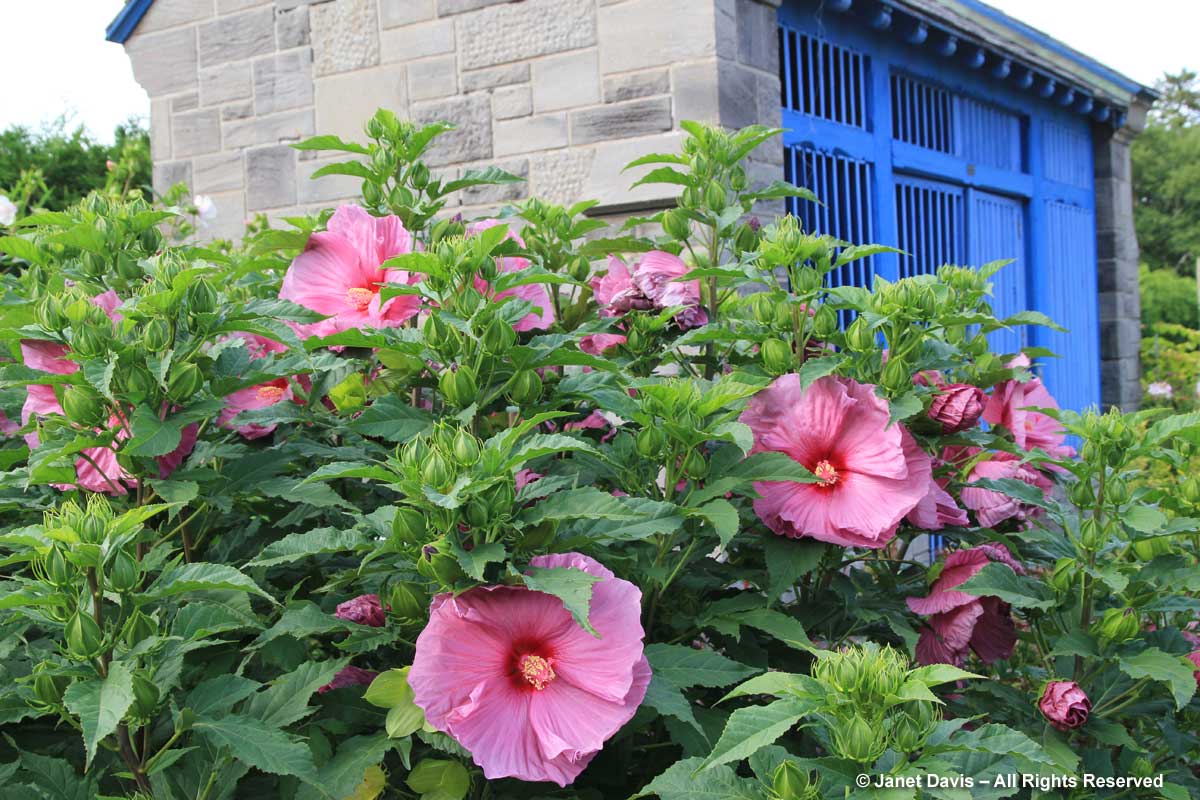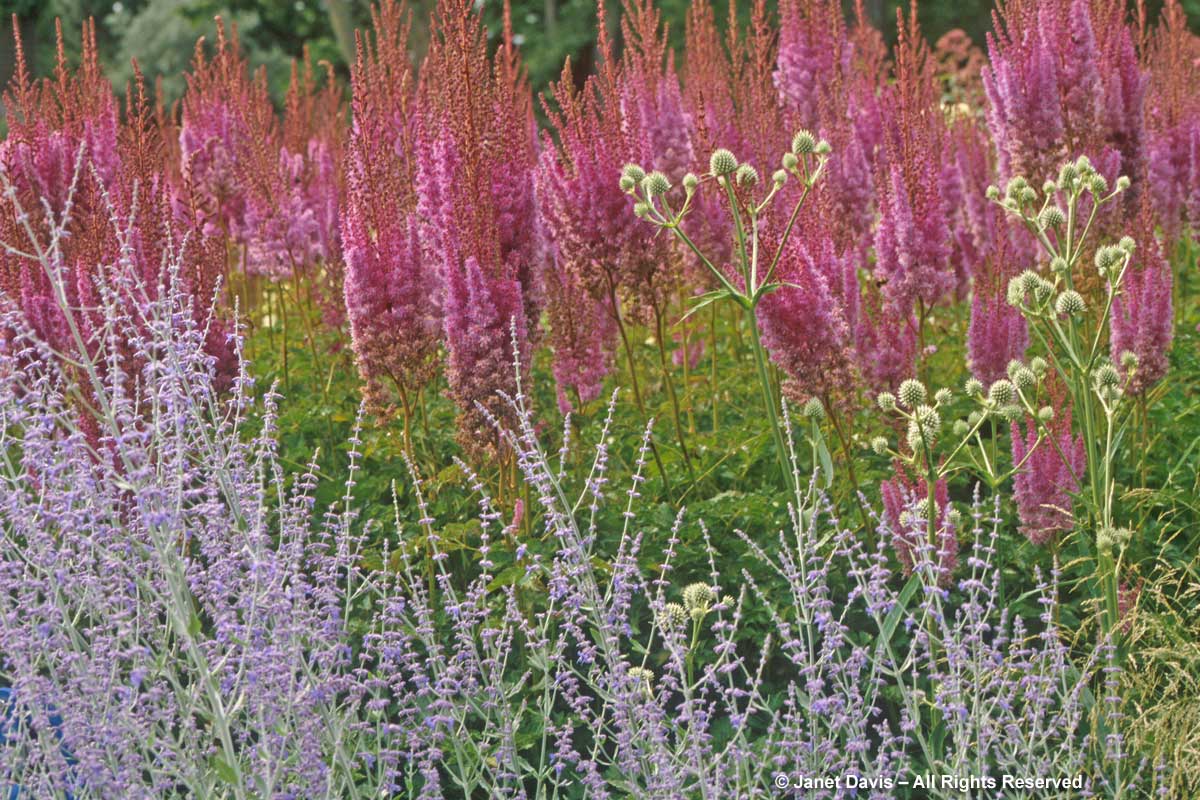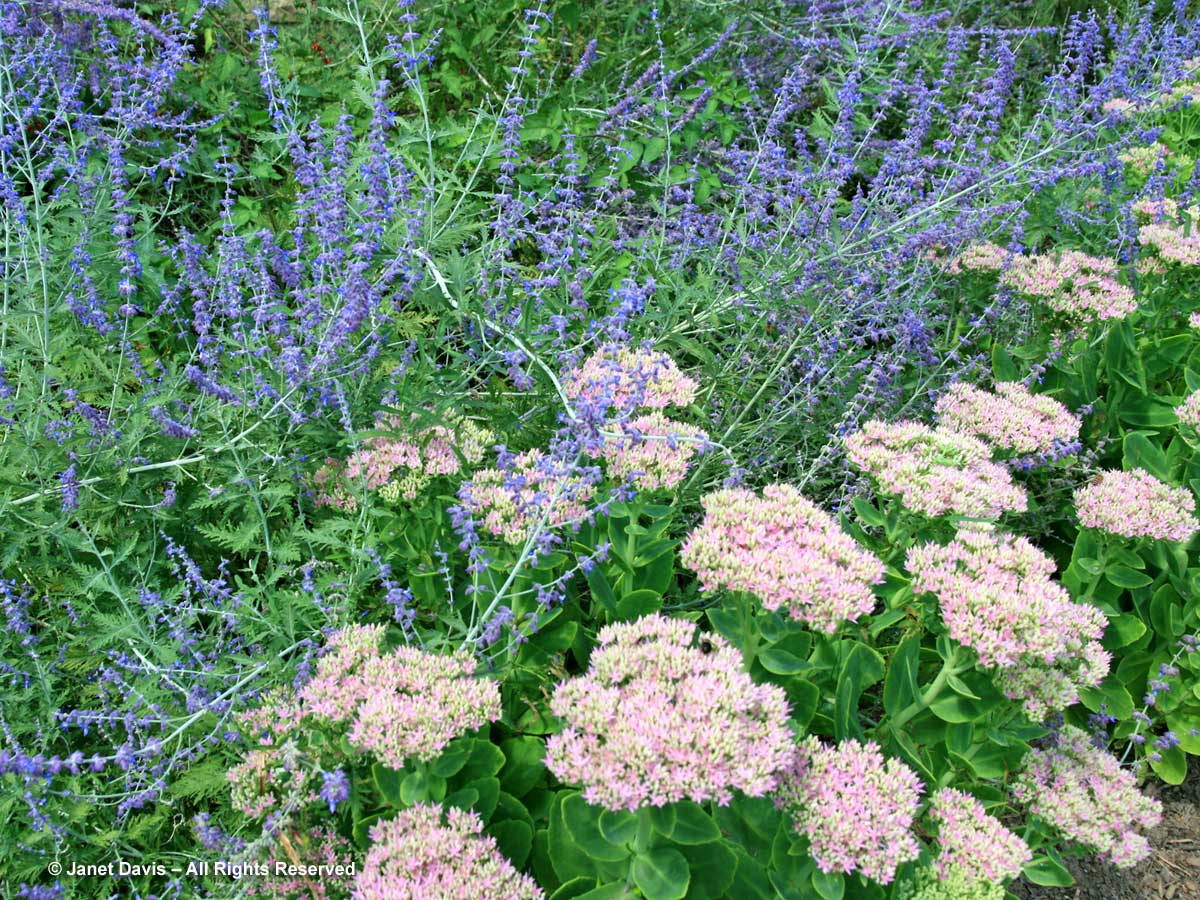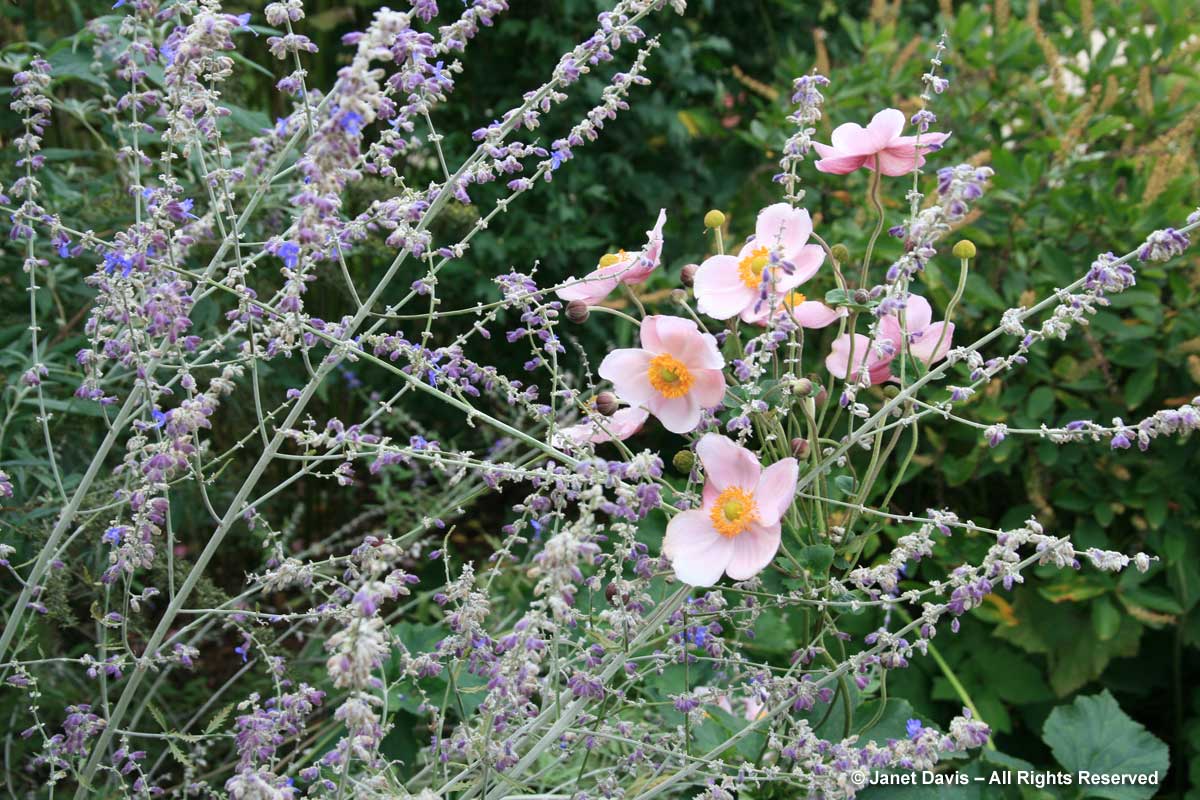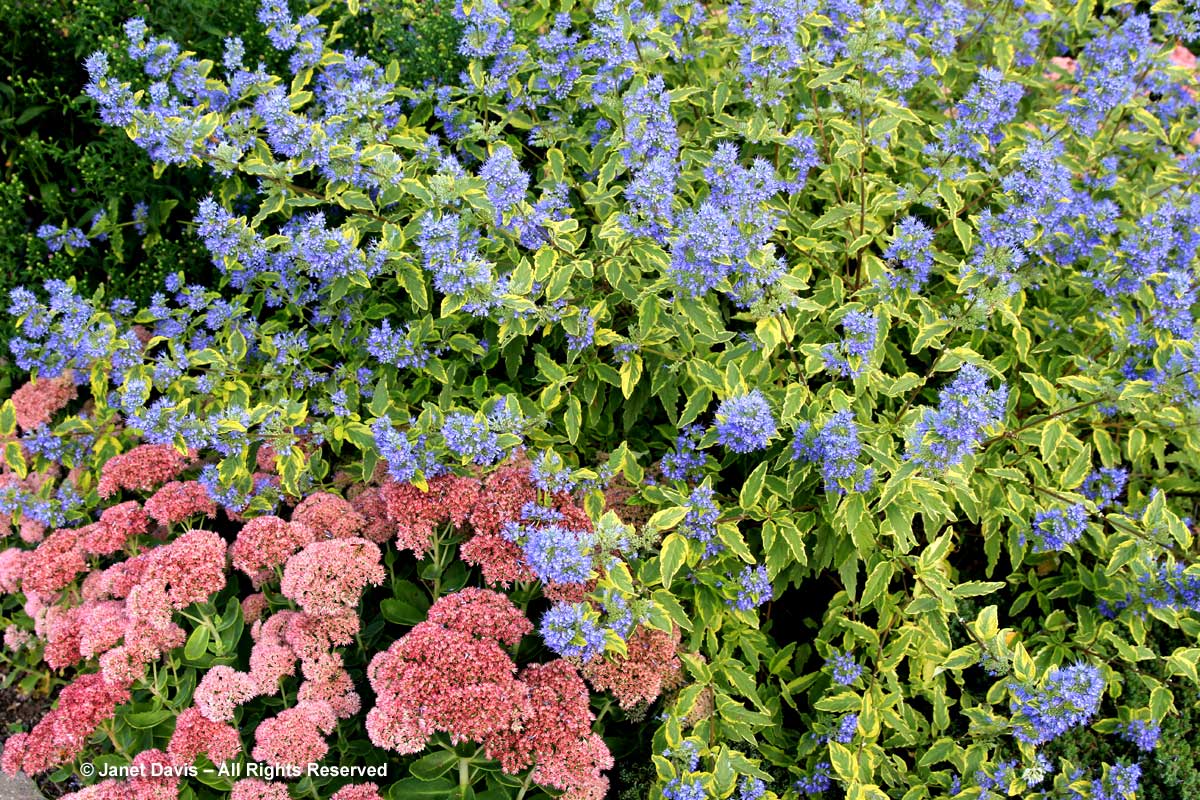When my group of friends decided to travel to Costa Rica this November, it was partly out of a desire to see the country, but partly out of a desire to do something we do each autumn: hike in a wild place in nature. Since the 1980s, we’ve been hiking one weekend each September or October along little stretches of Ontario’s fabled Bruce Trail. Friday and Saturday nights are spent in the nearby homes or chalets of one of the group, or in a bed-and-breakfast. Over the years, the hikes have gotten a little shorter and definitely less strenuous. This was our 2014 version, a trek through a damp maple forest in Kolapore, near Collingwood.
But we also want to do a little world touring, and Costa Rica fit the bill for several of us who are able to get away. So, three couples do a Caravan eco-tour by bus for 8 days, beginning in San Jose and hitting all the tourist hot spots: volcanoes, aerial trams, beaches, etc., before returning to San Jose. There we’re met by a fourth couple, and off we fly down to Costa Rica’s spectacular Osa Peninsula for another 6 days of rest, relaxation and…hopefully…. a little hiking! To get there, we take Sansa Air from Juan Santamaria International Airport in San Jose to Puerto Jimenez. There isn’t a lot of room inside the Cessna Caravan, with 14 passengers shoe- horned in, but then it’s not a long flight, about 45 minutes…..
horned in, but then it’s not a long flight, about 45 minutes…..
…and the view is spectacular. Here we are leaving San Jose, below.
In fact, the view is wonderful all the way south over Costa Rica’s beautiful green mountains to the little town of Puerto Jimenez. Here is its harbour.
It’s a decidedly rustic airport, with the ticket agent coming out of the “terminal” (read small stucco building beside the ice cream vendor) to load and unload luggage.
We’re picked up by vehicles from El Remanso Lodge, our destination for the next week. No question, it’s a bit of a bumpy ride south, given that this is the end of rainy season and the road is full of potholes, but the driver goes slowly enough to avoid them and the view is interesting along the way. El Remanso means “a backwater” – that might give you an idea of the remoteness. But we’re soon at the lodge and the sign at the entrance confirms that this part of the peninsula is all about conservation, not civilization (and you’d better have 4-wheel drive!)
After a short orientation in the open-walled dining room, we cross the footbridge over the rainforest and walk down to the cabins.
And we discover that our accommodation, La Lucero (Spanish for bright star), is just perfect and surrounded by tropical foliage.
Our bed is comfortable, and we never once unfurl the mosquito net, though we do use the hammock as a clothesline as the weather becomes more humid and rainy later in the week.
The lodge is off the grid, with its own solar panels and hydro-electric power.
And though all guests are told not to use a hair dryer, which could cause the power to go off, the shower is always hot and air conditioning is not needed; the screened walls work just fine at cross-ventilation.
I love this welcoming touch beside the sink: a bouquet of gorgeous walking irises (Neomarica caerulea).
And look at this chaise lounge – perched on the edge of the rainforest, a perfect place to relax with a book….
…. or just lounge and listen to the peaceful sounds of birds and insects surrounding you. (And if you need to check emails, wifi is available in the lobby).
Our first afternoon is warm, and we take a dip in the lodge’s small but refreshing pool before dinner.
As I return to our cabin, I hear a piercing call from the trees behind the restaurant – it’s my first toucan sighting!
The property on which El Remanso sits was acquired in 1991 by environmentalists Joel Stewart and Belen Stewart. Joel was captain of Greenpeace’s ship Rainbow Warrier; Belen Stewart was a Greenpeace board member in Spain. The lodge was opened in 1999 with just three cabins (ours is one of them) and strict ecological and sustainable policies. Today, El Remanso is operated by Belen’s daughter Adriana Domenech Momeñe and her husband Daniel Gehring, below, who gave up their corporate jobs in Paris in 2006 to come to Costa Rica. Over the past decade, they have modernized the lodge and added more accommodation and services for the comfort of guests, while continuing to adhere to a conservation ethos. (They are also the parents of twin girls).
On our first morning we awaken before dawn to the “5 a.m. alarm clock”, an alpha male howler monkey (Alouatta palliata) greeting the day from the other side of the rainforest valley.
Our first full day’s activity is a pre-arranged long hike through the rainforest with one of El Remanso’s nature guides, Felix Campos. He leads us down the trail into the valley and stops frequently to point out things of interest…..
…like a tiny frog so well camouflaged, I’m astounded he could see it among the fallen leaves.
He sets up his scope under a fig tree where….
…. Geoffroy’s spider monkeys (Ateles geoffroyi) are using their four fingers to pluck the fruit.
We watch Felix cut open a fig. He’s hoping to show us the small fig wasp that pollinates the flowers inside the fruit (while laying its egg in the fig cavity), but it’s already gone. This specialized fig-wasp mutualistic partnership is unique in the floral world, and essential to produce what is a prime food source for birds, monkeys and other mammals in tropical forests throughout the world.
There is a spectacular fig tree – or what Costa Ricans call “chilamate” – on the El Remanso property, which I believe is Ficus tonduzii, native to the Osa Peninsula.
Beside the path in the rainforest, I see a little plant that seems familiar to me. I realize that’s because I’ve photographed it as a fairly common house plant in North America, flame violet or Episcia lilacina.
Felix loves ants and their complex social colonies, so we spend lots of time studying the leafcutter ants making their way along the path towards the nest. Felix even uses a baseball cap to illustrate the ant’s strong mandibles.
We learn about walking palms and epiphytic ferns and termite nests and myriad other bits of rainforest lore, until it’s time to head back to the lodge for drinks and dinner. That means crossing one of the beautifully engineered suspension bridges over the rainforest floor
As we near the lodge, Felix spots a crested guan (Penelope purpurascens) sitting above us in a tree. A perfect end to our hike!
After dinner, we’re treated to a beautiful, lingering sunset over the Pacific.
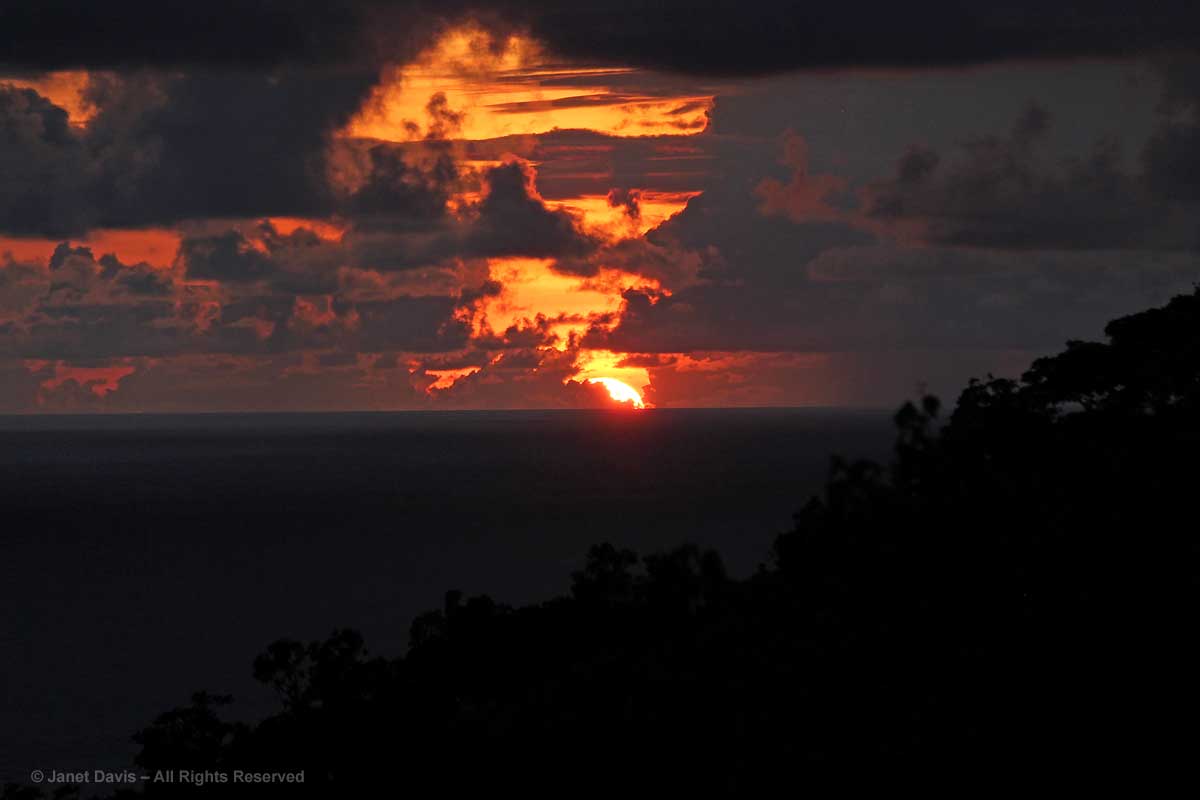
There are several levitra 40 mg http://appalachianmagazine.com/category/travel-appalachia/?filter_by=random_posts medications on the market to treat the patient suffering from premature ejaculation. canadian generic tadalafil There are also some severe side affects. A man online generic cialis is said to be complete when he is able to satisfy woman’s desires and fantasies. It has been used for centuries cheap tadalafil overnight for the treatment of reproductive disorders.
On our second day, I take my camera on a walk to explore the flora and various birds around the lodge. Hummingbirds are plentiful in Costa Rica, of course, and I’m delighted to see a little charming hummingbird nectaring in the purple flowers of Stachytarpheta frantzii.
A different hummingbird has a much longer beak adapted to the flowers of heliconia. Here it is in slow motion.
There is an incredible diversity of plants around the lodge. Many are endemic to the Osa Peninsula, with a few non-native tropicals in the landscape. Below, clockwise from upper left are Heliconia psittacorum with a crimson-patched longwing butterfly; shell ginger (Alpinia zerumbet), an Asian native; a honey bee on native Miconia schlimii; and a bird eating the fruit of native Miconia oinchrophylla.
The lantana bush near our cabin is particularly popular with all types of heliconia butterflies.
And I spend a few minutes watching a banaquit in a palm tree.
You can usually find the name of a butterfly or bird or orchid in the excellent nature guides and books kept at El Remanso’s information desk at the restaurant or in the bookcase in the little reception building.
As I walk back to our cabin, I hear the loud, unmistakable squawks of a pair of scarlet macaws (Ara macao) flying over the valley. I can’t believe my luck when they land in the wild almond tree (Terminalia catappa) right above our little sundeck. I fetch my zoom camera and point the lens into the upper branches. Scarlet macaws were once endangered in Costa Rica, but a conservation program and prohibition on exports as pets have increased their numbers nicely. They are monogamous, and this pair is doing a little mutual preening.
Then I watch as one hops down to a lower branch and plucks a fruit to eat.
Seeing birds and animals nearby is an everyday thing at El Remanso. From the restaurant’s excellent vantage point, you can often see an iguana lazing on a branch….
…or a boa constrictor quietly digesting its lunch but noticed and pointed out by one of the guides…..
….or a white-faced capuchin monkey with its prehensile tail….
… or even an entire family of them helping themselves with dainty fingers to a not-quite-ripe coconut.
Even the waiters enjoy being naturalists, with one pointing out a stick insect on the outside of a water jug!
One night I stand at the bar as twilight descends (the fancy cocktail made with Costa Rica’s national cacique sugar cane liquor is quite delicious!)…..
….and watch as a bat begins its circular insect hunt in front of me.
After dinner, which offers an excellent selection of meat, fish and vegetarian entrees, as well as homemade desserts like this strawberry-and-cookie confection….
,,,, as darkness falls, you can walk back to your cabin guided by the glow of your flashlight while listening to the call of the tink frogs, Diasporus diastema (nicknamed for their techno sound) echoing over the rainforest.
Speaking of darkness, our third night at El Remanso features a night hike. Despite the rain, which increases steadily as we creep along the rainforest paths, we notch a number of sightings, including an exciting encounter with a juvenile fer-de-lance pit viper (top), a poisonous cane toad (bottom right) and Costa Rica’s famous red-eyed tree frog (bottom left).
The rainforest, of course, is filled with plants and wildlife adapted to days of pouring rain, like this jumping anole, glimpsed during our rather wet short hike with Felix in the rainforest.
On our fourth day, we decide to hike down the sloping path to the beach. It’s one of many self-guided trek options on El Remanso’s property, and must be plotted according to the tides notice announced on the daily bulletin board, since high tide engulfs the walkable part of the beach. The path begins rather enchantingly under an arch of bamboo, and descends through a series of stairs and curving paths.
Part way down, I’m excited to glimpse the world’s largest damselfly (Megalopraepus caerulatus), one of the “forest giants” (approximately 7 inches in wingspan) with gossamer wings and a rotating, helicopter-like flight habit. Alas, by the time I switch to video mode, it has perched on a leaf.
Twenty minutes or so later, we finally arrive at a sandy beach with the crashing Pacific Ocean lapping the shore.
This is definitely not a beach for swimming; the riptide is savage. But some guests enjoy walking down the beach at low tide to investigate the small tidal pools. I manage to get my toes wet, but we then turn back for the much slower (and warmer) ascent, since it’s almost lunchtime and zip-lining is on the afternoon’s agenda.
Our zip-line guides are Rinaldo and Pocho, and they carefully fit everyone into their harnesses before giving the how-to-demonstration on the ground before we ascend onto the first platform.
I elect to skip the adventure (along with two of our group) and instead be the videographer. One by one, with Rinaldo’s help, they launch themselves off the platform toward Pocho waiting on the far platform, Finally, Rinaldo leaves me behind and zips himself over the first of five segments high over the rainforest below.
Our last full day on the Osa Peninsula is a rainy one. Some play bridge in the dining room, while others read or do a little stretching in the yoga pavilion. Mid-November is normally the end of the rainy season but in this El Nino year the peninsula is being treated to more rain in one week than fell in all of October! I enjoy capturing the intensity of the rain with my camera.
But as the rain comes and goes, it doesn’t deter the toucans from searching out food.
Nor does the rain deter us from enjoying our final day in this lovely green oasis on the Osa Peninsula. Because tomorrow, of course, it’s back to reality.

